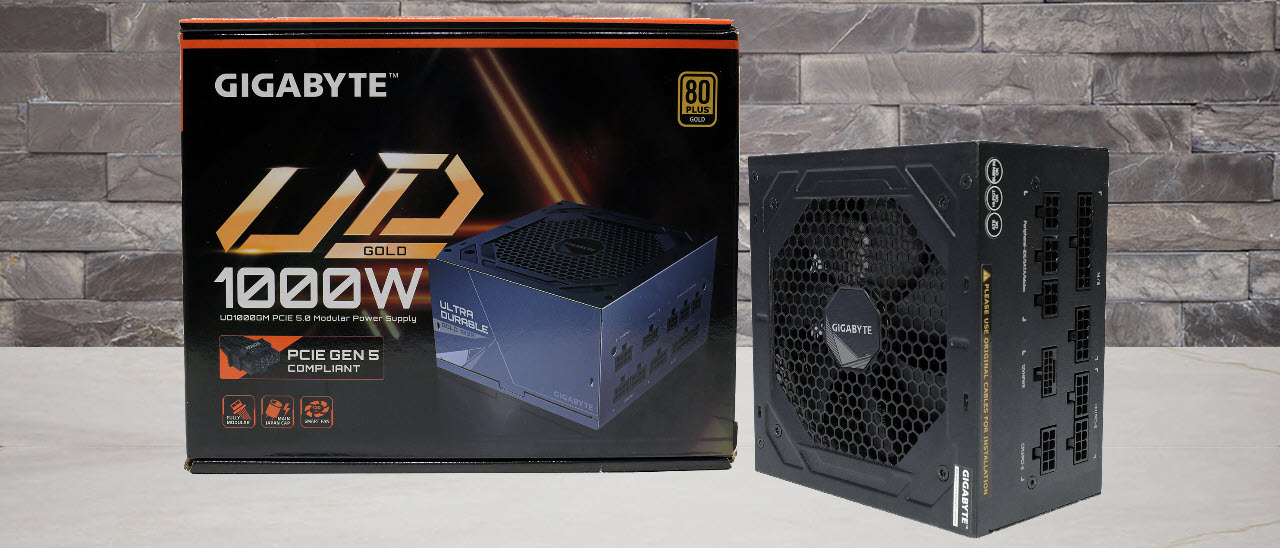Tom's Hardware Verdict
The Gigabyte UD1000GM PG5 is the first PSU available with a 12+4 pin PCIe connector, so practically, it doesn't have any competitors yet. Soon enough, though, there will be more choices.
Pros
- +
Full power at 47 degrees Celsius
- +
Equipped with a 12+4 pin PCIe (12VHPWR) connector
- +
Most protection features are properly set
- +
Tight load regulation at 12V
- +
Decent ripple suppression
- +
Efficient
- +
Efficient 5VSB rail
- +
Low inrush current with 115V
- +
Good soldering quality
- +
Compatible with alternative low power modes
- +
Fully modular
- +
Rifle bearing fan
- +
Compact dimensions
- +
10-year warranty
Cons
- -
Increased noise output
- -
Overall performance needs boosting
- -
Low quality (Lelon) caps on the secondary side
- -
There is no bypass relay supporting the NTC thermistor
- -
Not tight load regulation on the minor rails
- -
Didn't pass the 180% and 160% transient tests (ATX12V v3.0)
- -
High inrush current with 230V
- -
Lower than 16ms power ok signal
- -
Above 0.1W vampire power
- -
No option to toggle off the semi-passive operation
- -
Small distance between 4-pin Molex connectors
- -
Two EPS connectors on the same cable
Why you can trust Tom's Hardware
The Gigabyte GP-UD1000GM PG5 survived our demanding tests and achieved decent but not competitive overall performance. Its main advantage is the 12+4 pin PCIe connector, but very soon, all brands will update their PSUs with such connectors. Regarding ATX v3.0 compatibility, we found out that the GP-UD1000GM PG5 has trouble keeping up with this spec since it couldn't pass all corresponding transient response tests. This means that we won't include it in our best PSUs article. Other 1000W PSUs with higher performance, lacking the 12+4 pin PCIe connector, for the moment at least, are the MSI MPG A1000G, the EVGA 1000 G6, and the Corsair RM1000x (2021).
Gigabyte is not so popular in the PSU market because of the problems that the P750GM and P850GM units had. You can follow this story here. The newer generation members of the P-GM line had solved all issues, thanks to a PCB redesign. Still, there was no way to distinguish the older models from the new, revised ones. Given the infamy of the P-GM line, Gigabyte decided to introduce the UD series, which uses the new revision platforms found in the P-GM models but with different model numbers. So the UD line consists of three members with 750W, 850W, and 1000W capacities, and recently Gigabyte introduced the UD1000GM PG5, the first PSU available on the market boasting compatibility with the newest ATX v3.0 spec.
For a PSU to be compatible with the ATX v3.0 specs, if it has over 450W capacity, it needs to have a 12+4 pin (12VHPWR) connector and be able to meet the strict power excursions that the new Intel spec sets. You can read about the changes that the ATX spec 3.0 brings in our article.
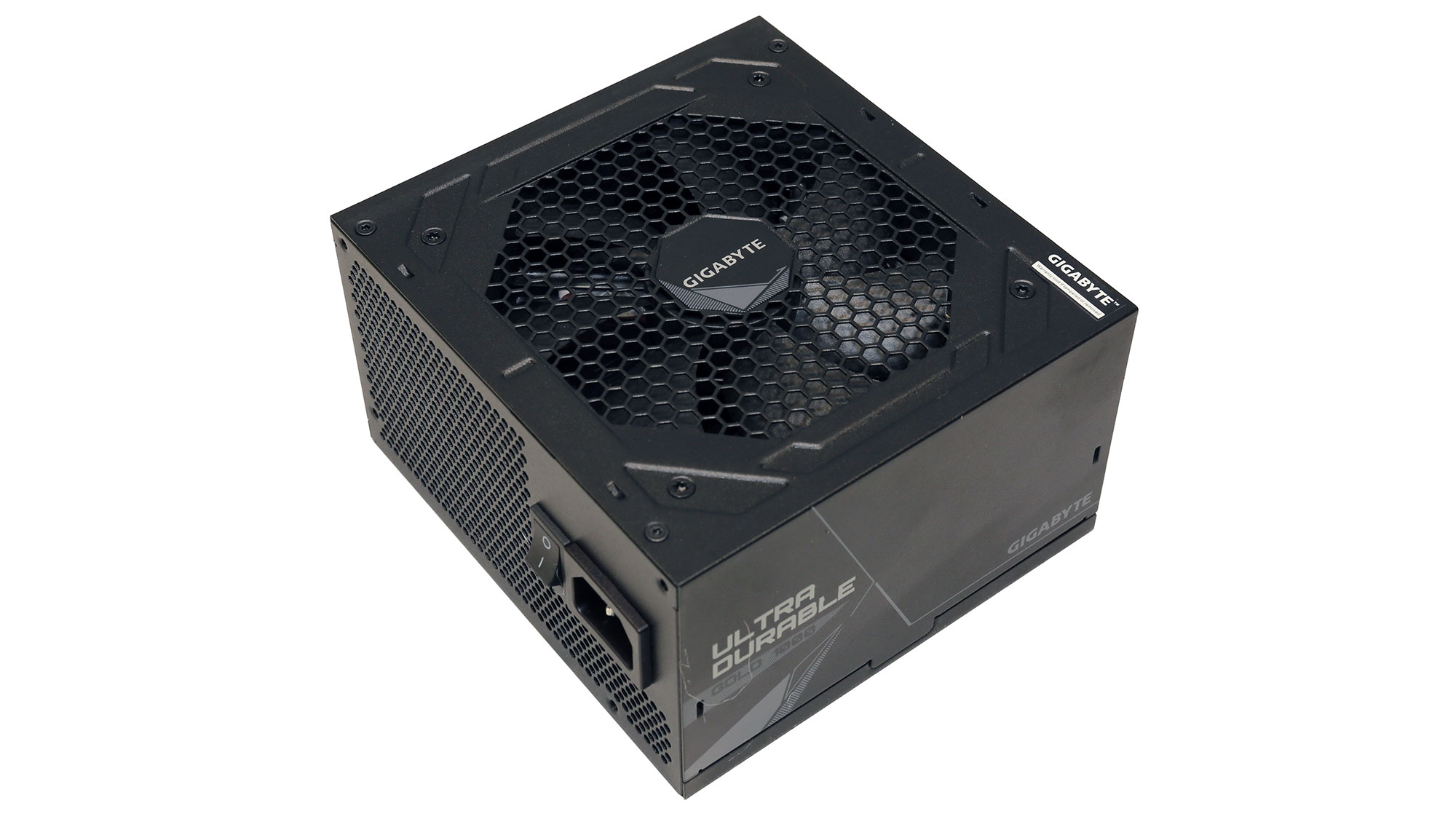
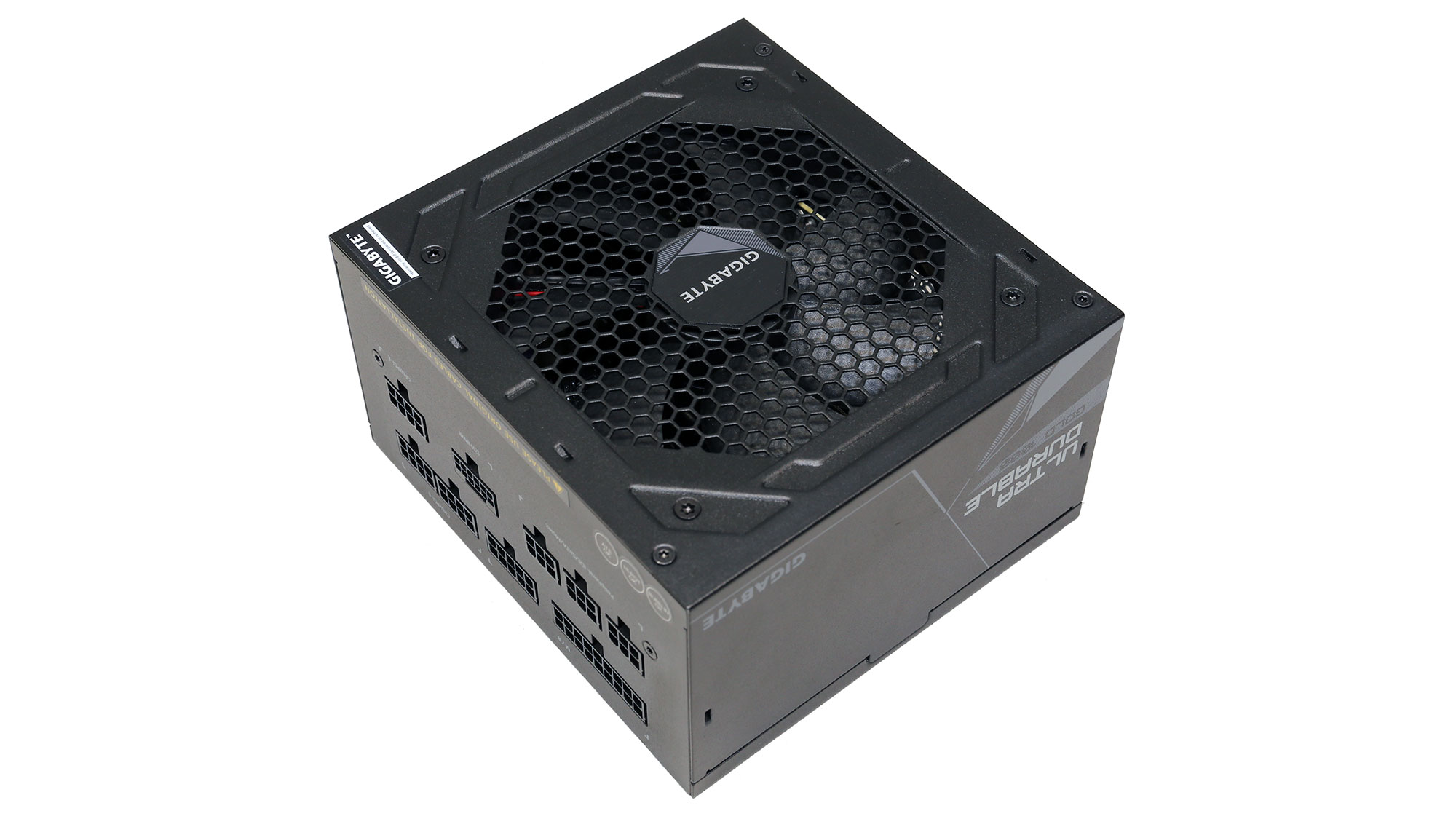
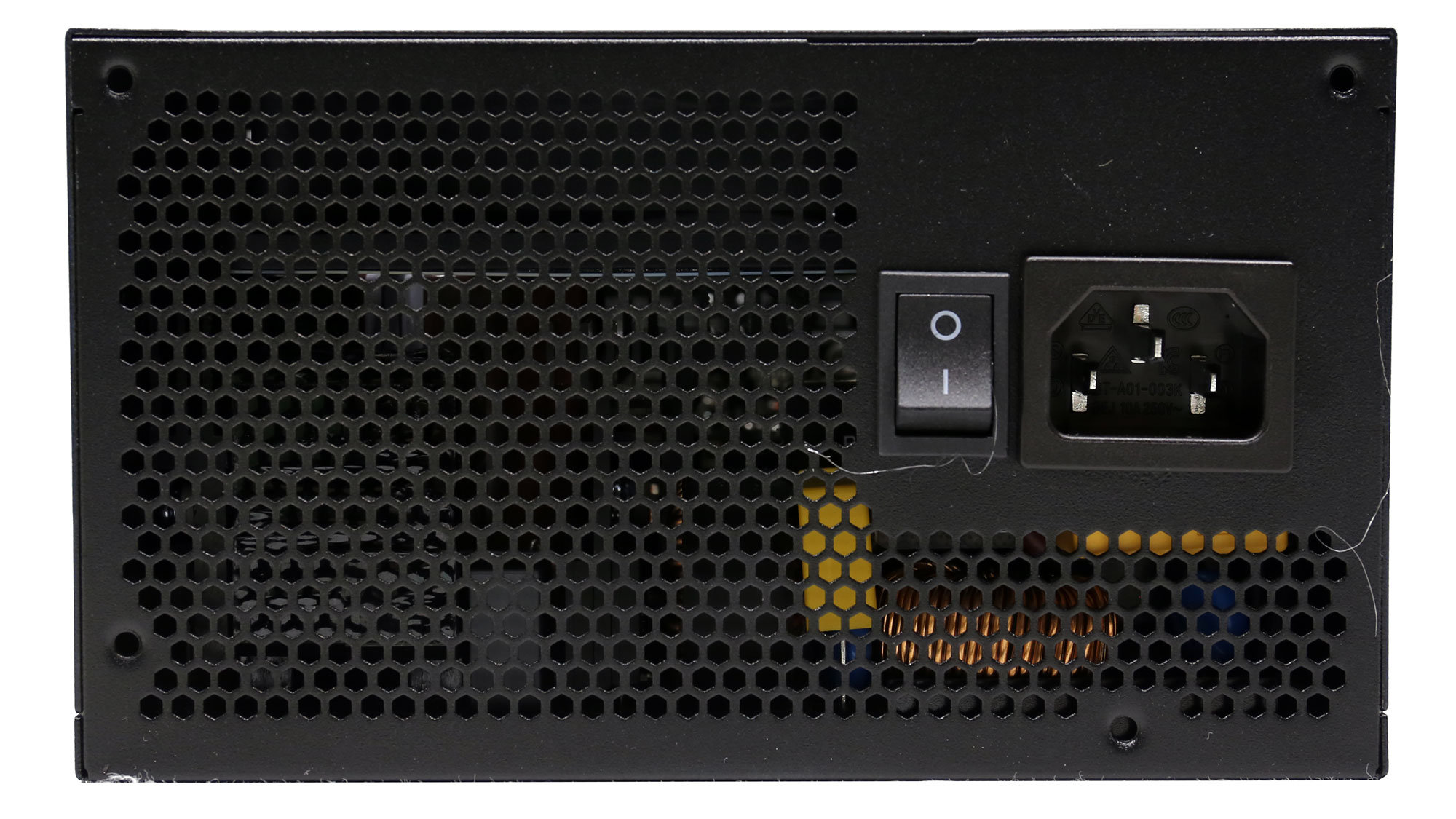
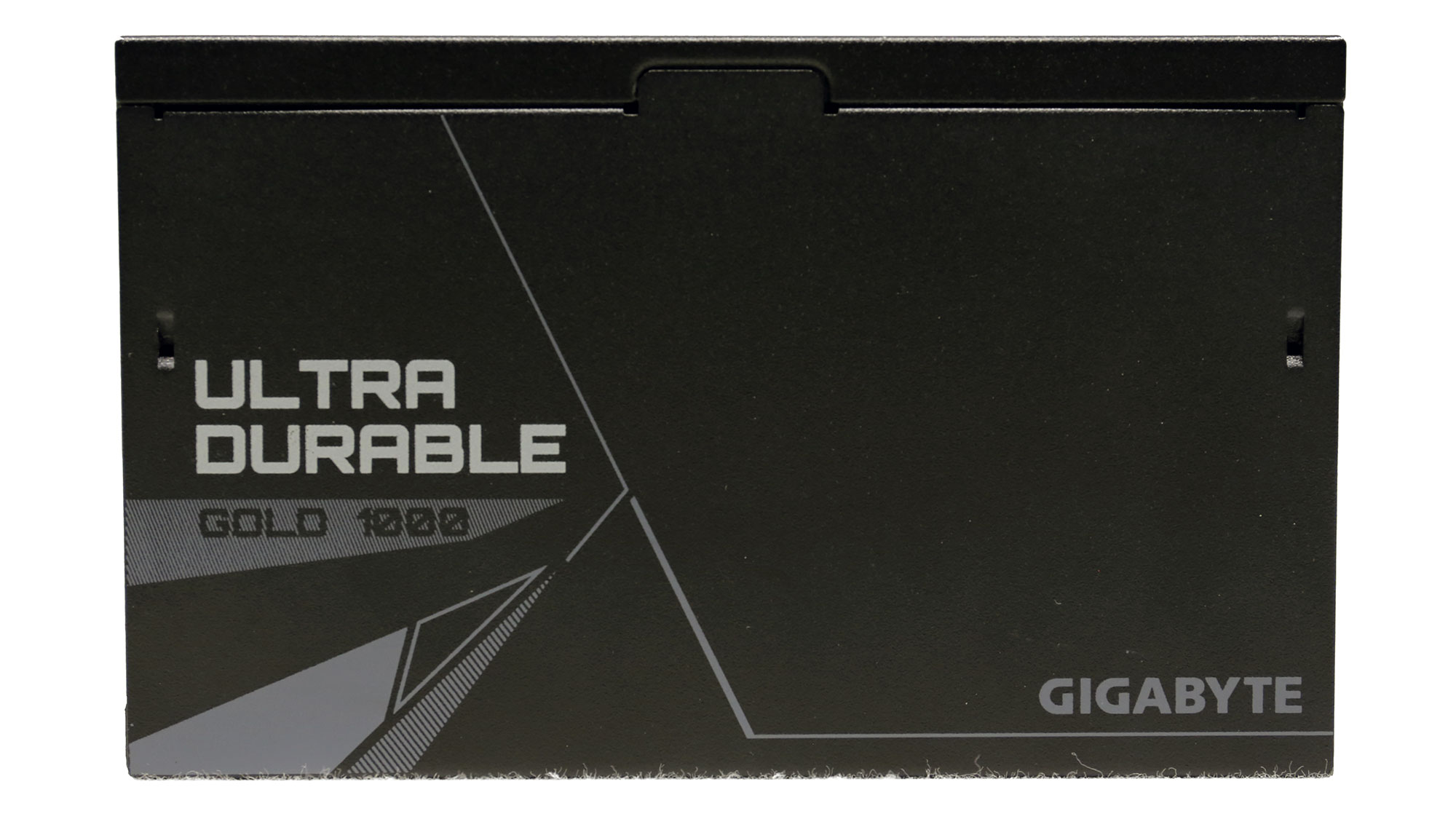
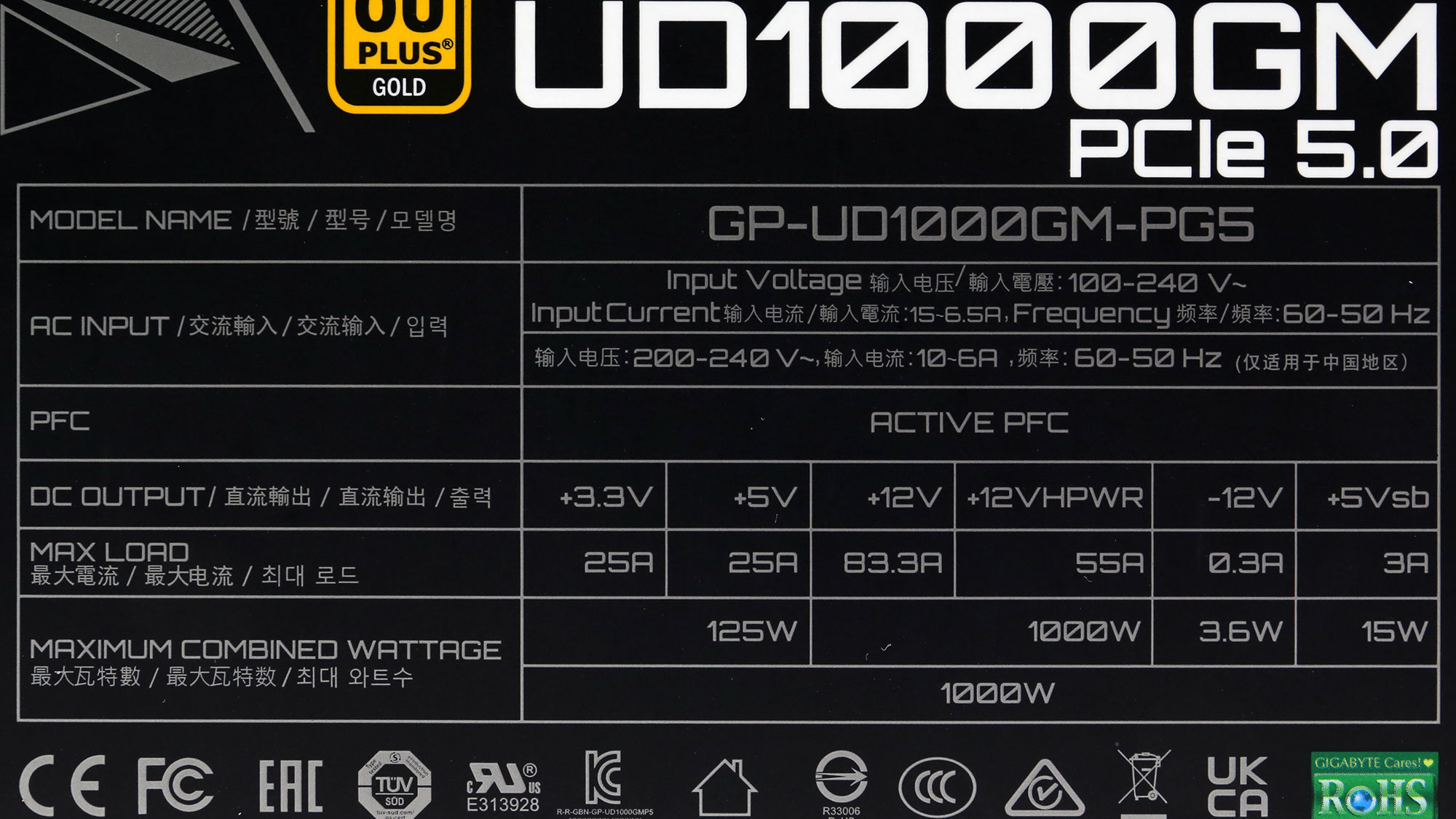
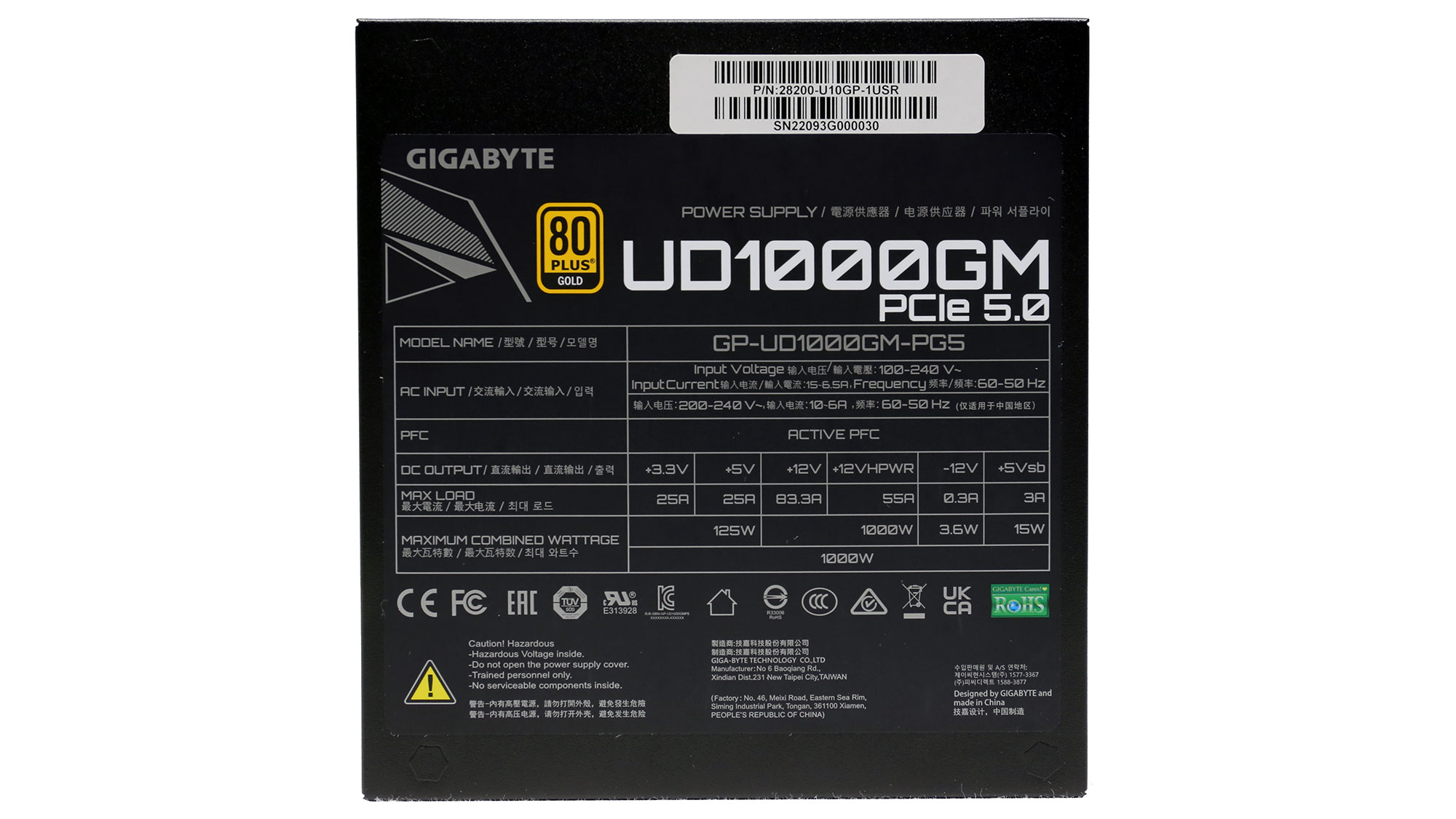
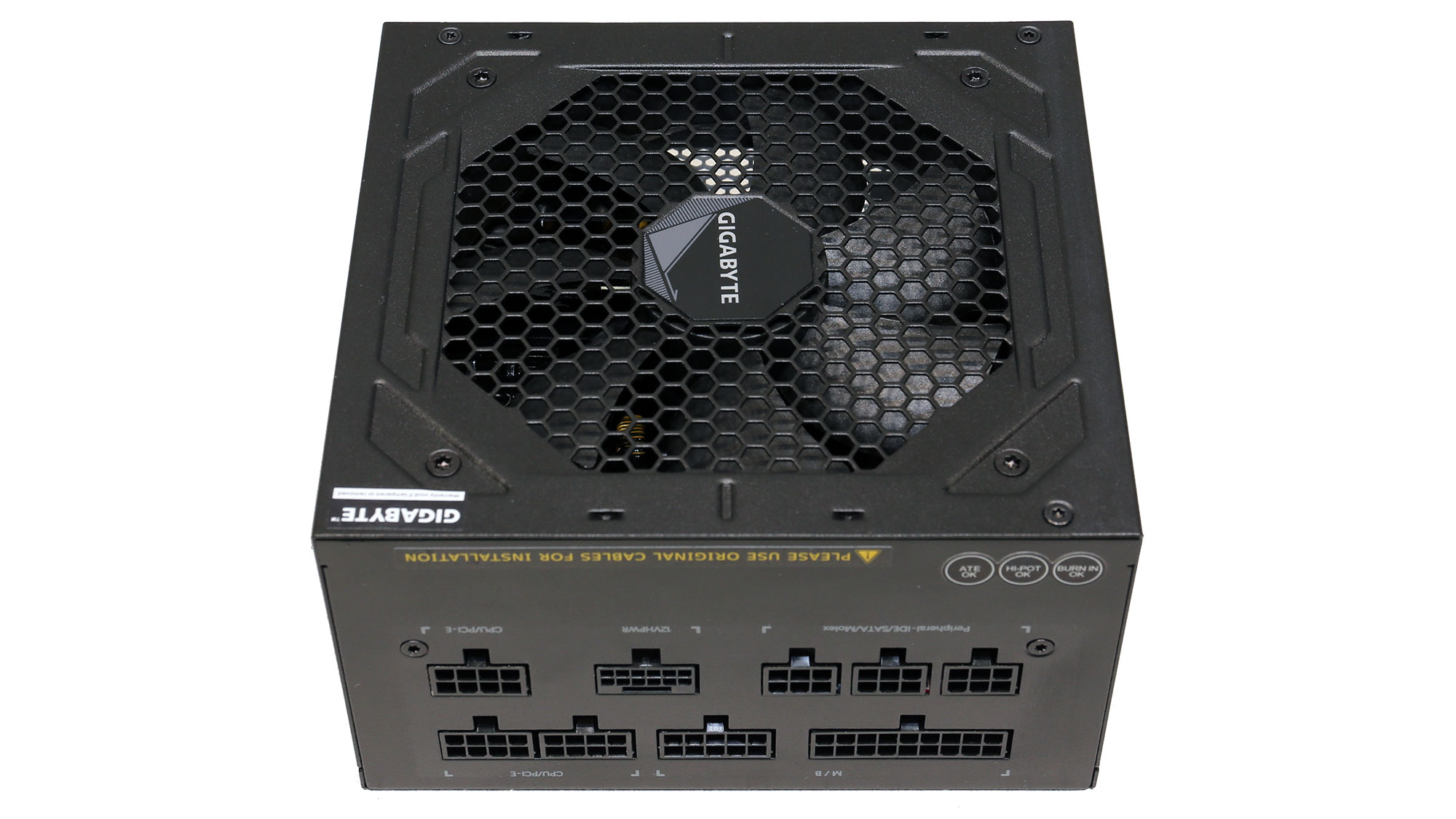
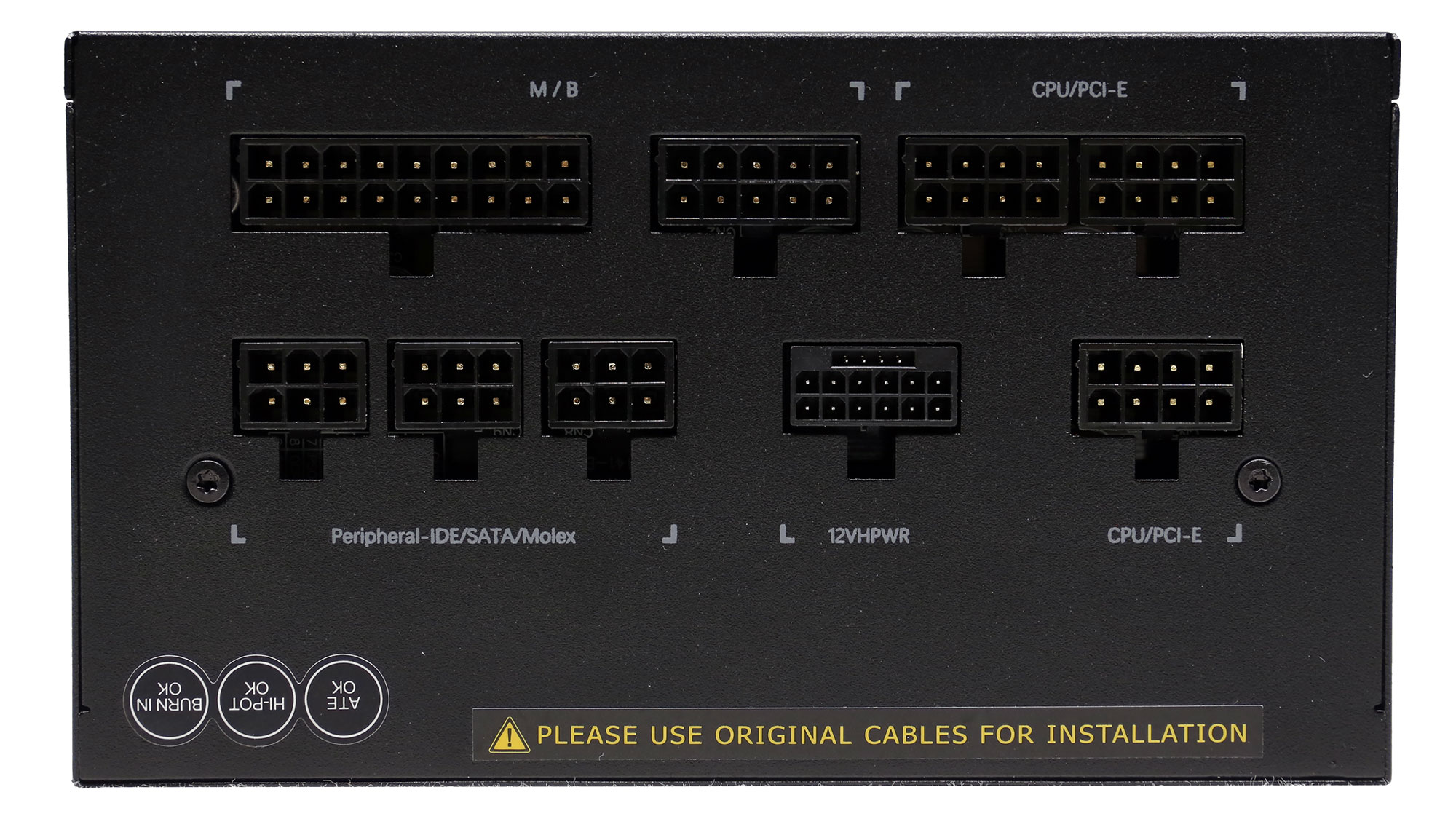
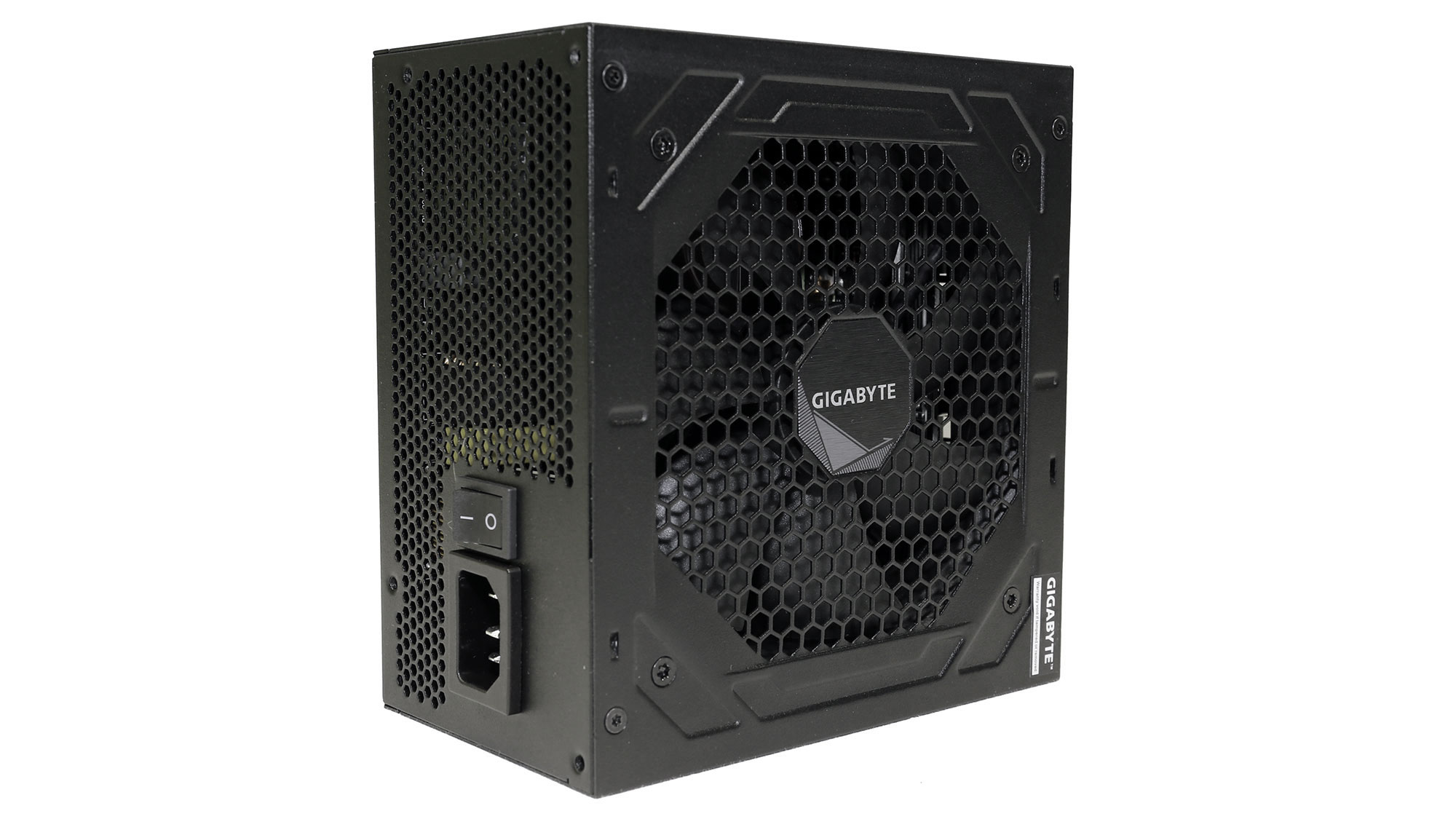
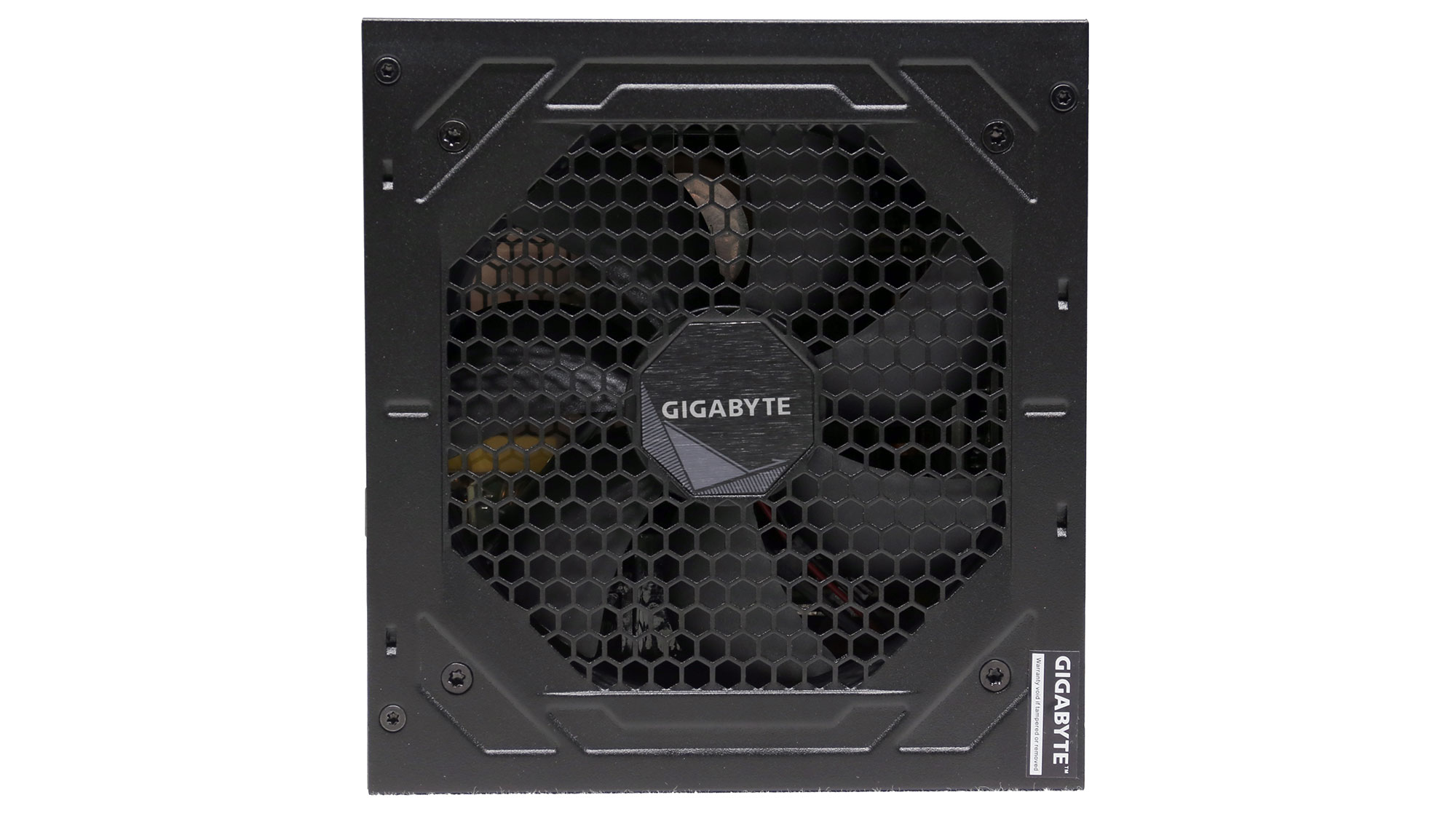
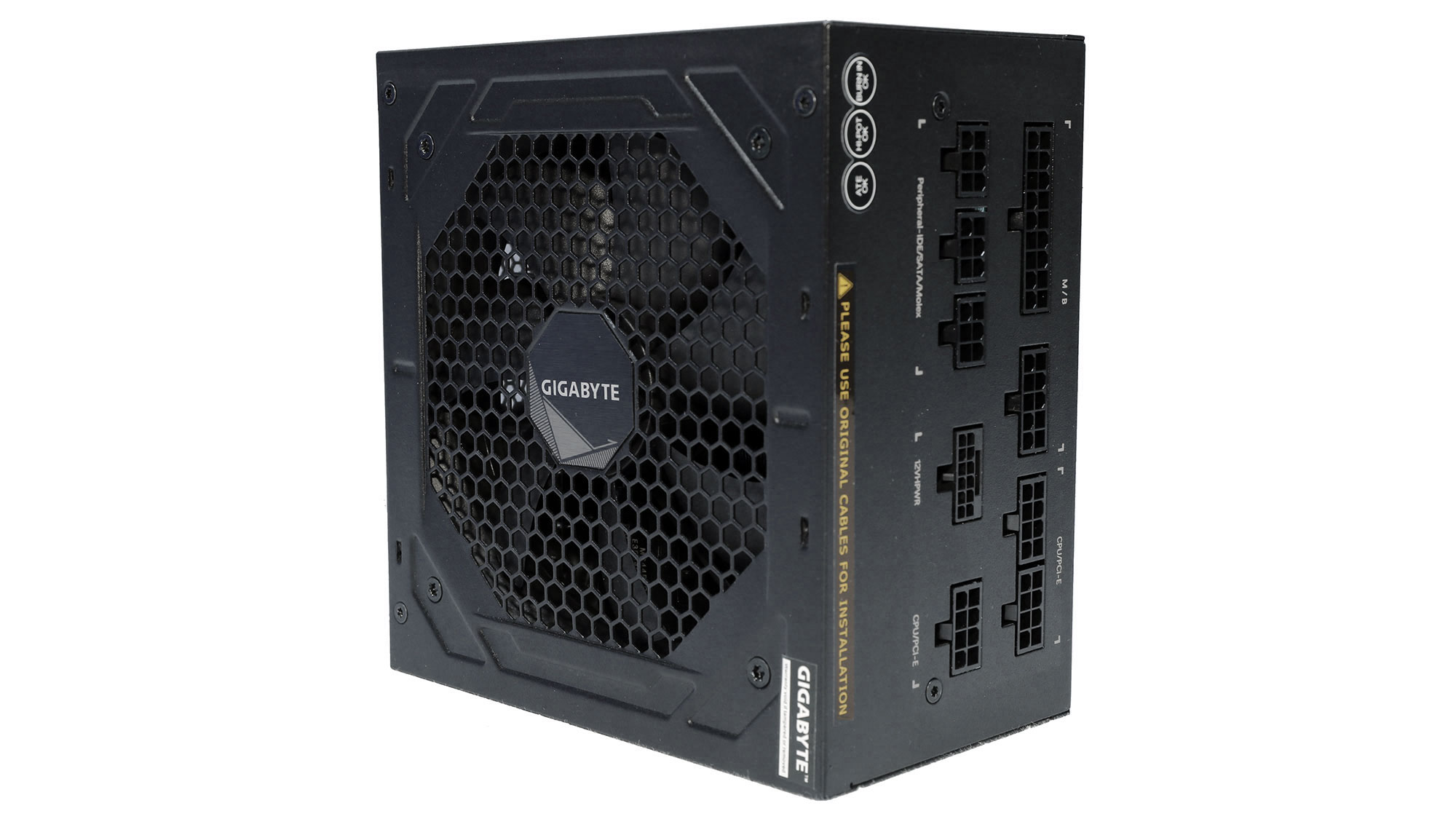
The UD1000GM PG5 is the updated version of the UD1000GM, with the latter being the successor of the P1000GM. The OEM remains the same, MEIC, which primarily focuses on power adapters but, as it seems, wants a piece of the desktop power supply market. The unit uses a fully modular cable design and has compact dimensions, thanks to its 140mm depth. It is equipped with a rifle-bearing fan, which will cope nicely with the 10-year warranty if you don't push it far at high operating temperatures. From certifications, the UD1000GM PG5 comes with 80 PLUs Gold and Cybenetics Platinum in efficiency, while in noise, it is rated as Cybenetics Standard+, so don't expect it to be silent.
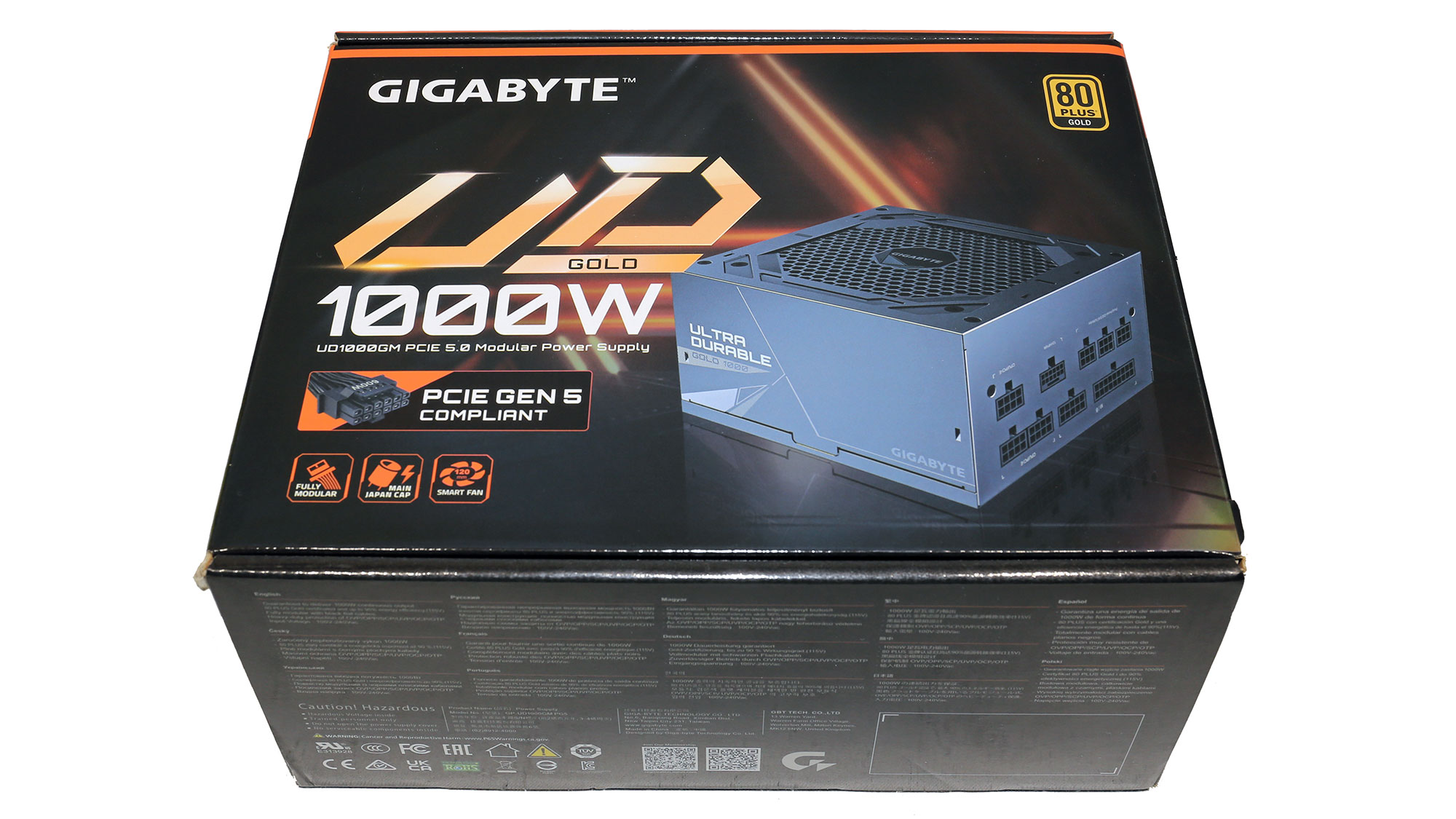

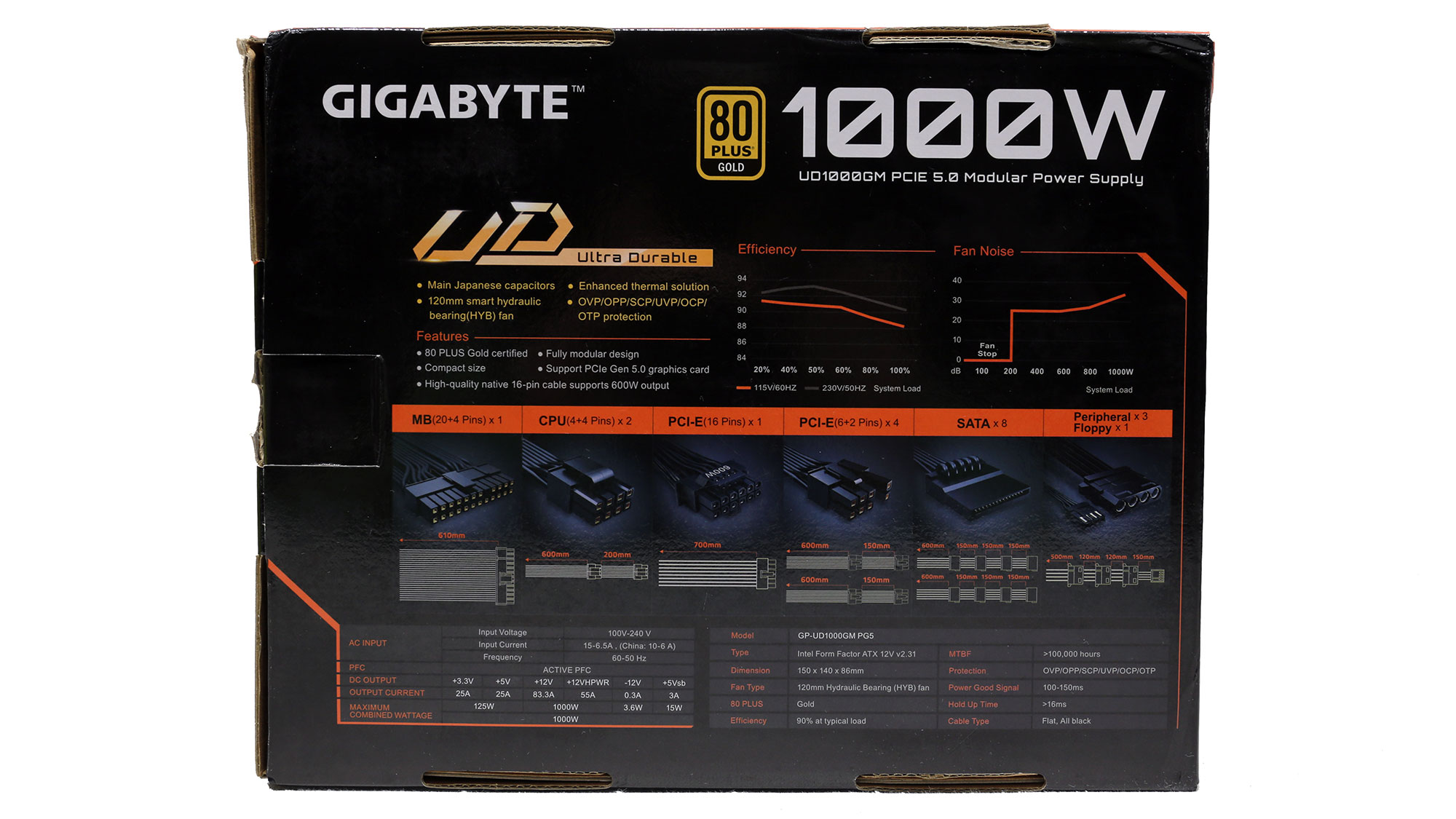
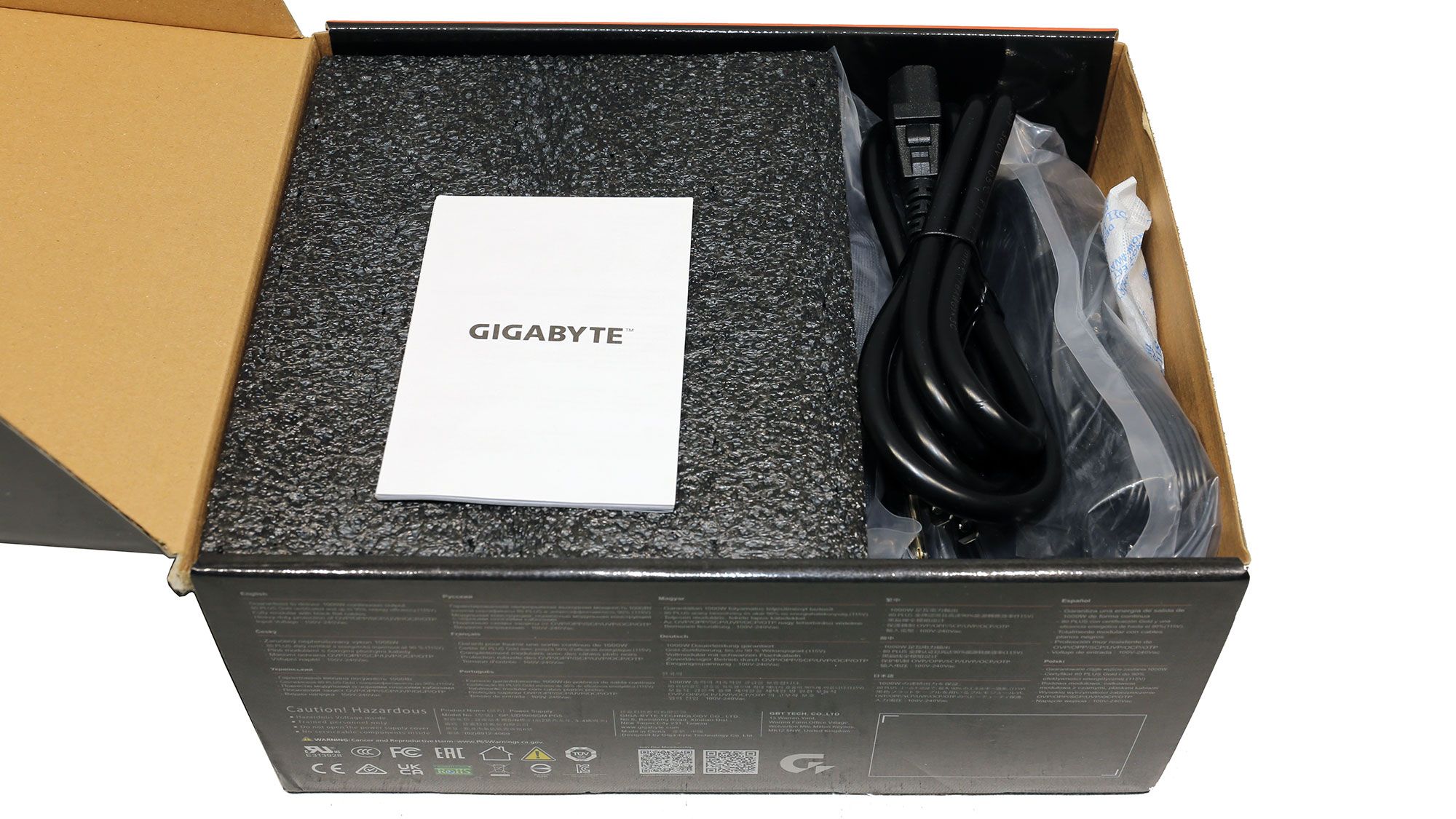


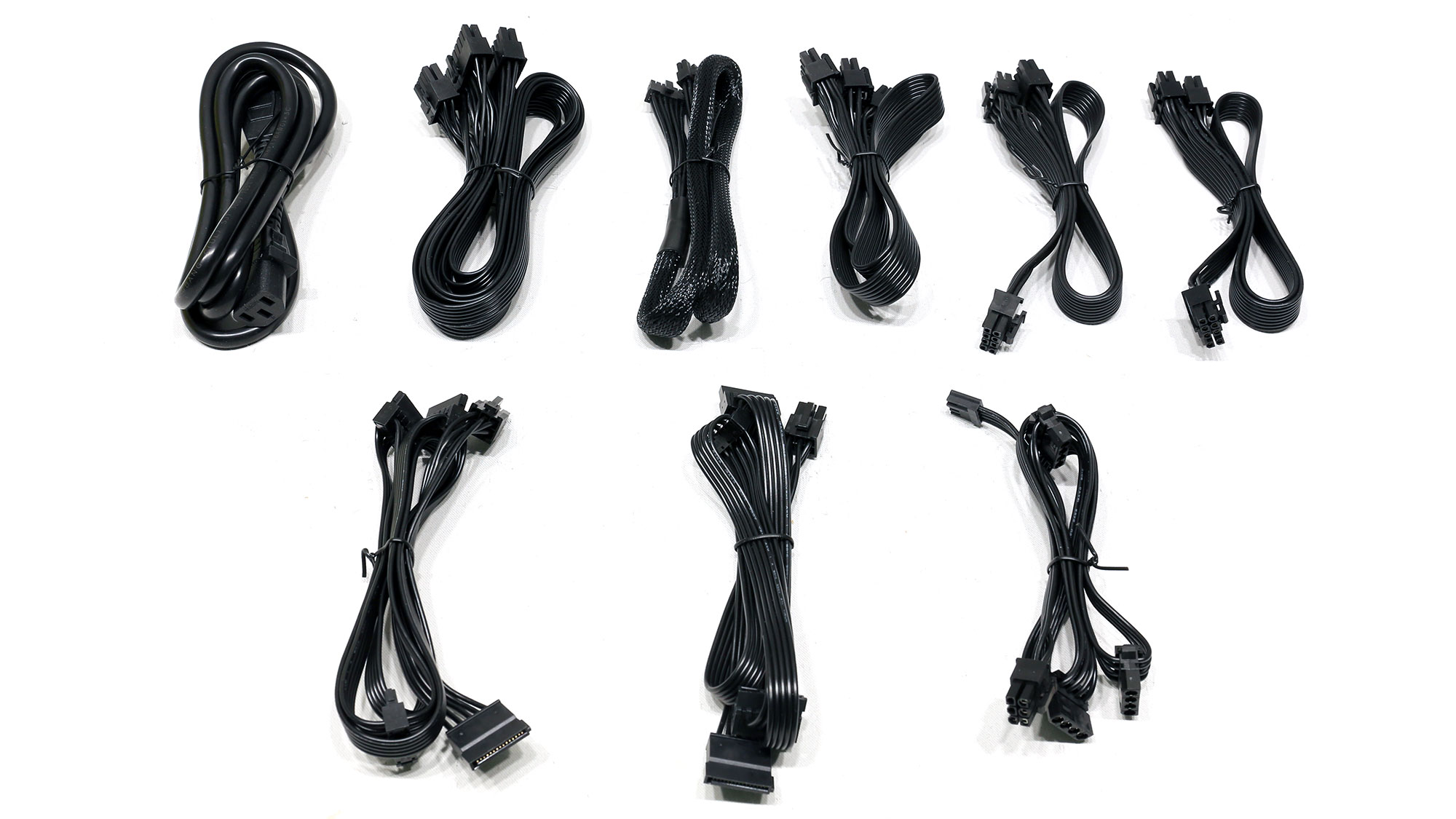
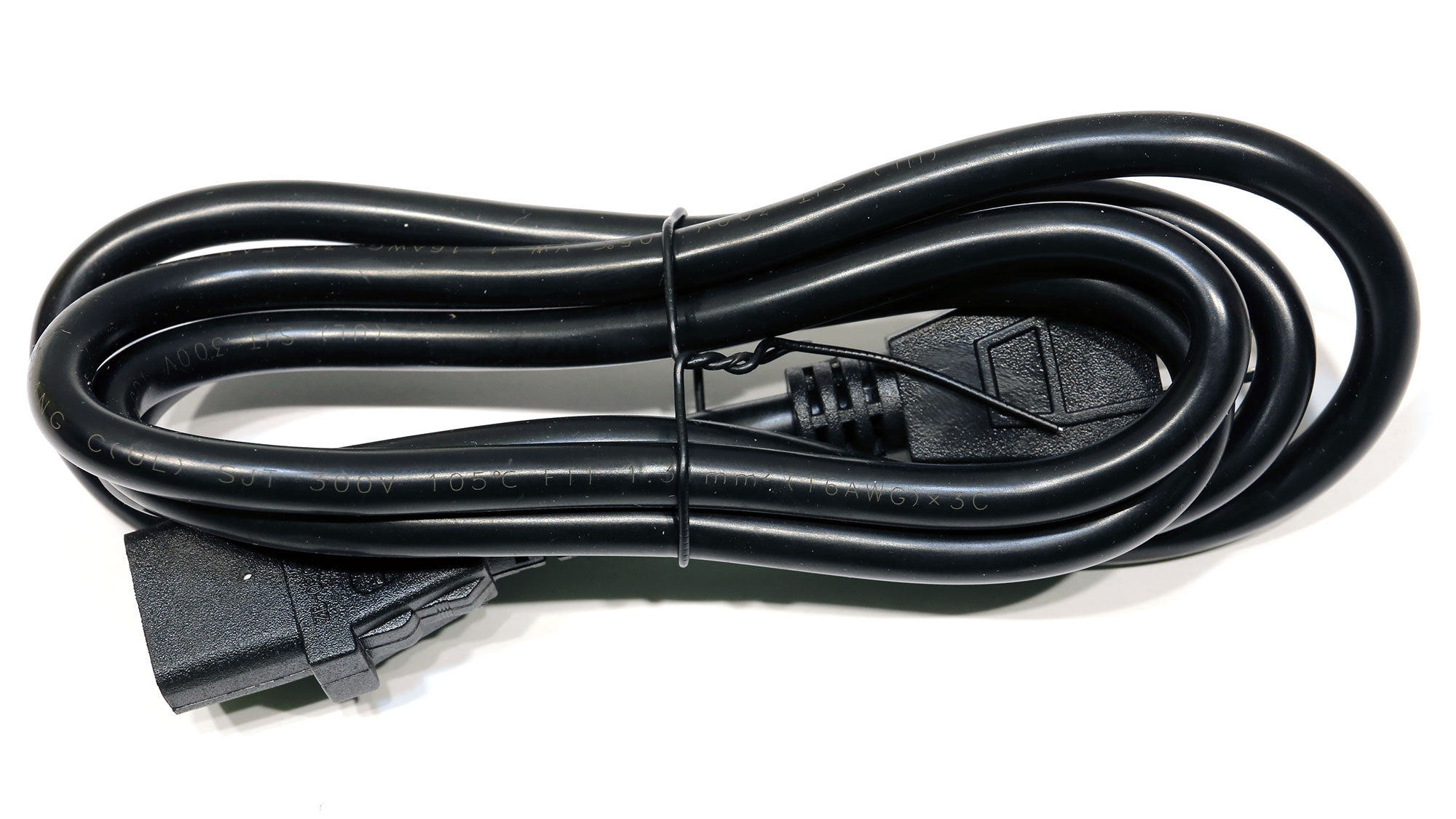
Specifications: Gigabyte UD1000GM PG5
| Manufacturer (OEM) | MEIC |
| Max. DC Output | 1000W |
| Efficiency | 80 PLUS Gold, Cybenetics Platinum (89-91%) |
| Noise | Cybenetics Standard+ (35-40 dB[A]) |
| Modular | ✓ (fully) |
| Intel C6/C7 Power State Support | ✓ |
| Operating Temperature (Continuous Full Load) | 0 - 40°C |
| Over Voltage Protection | ✓ |
| Under Voltage Protection | ✓ |
| Over Power Protection | ✓ |
| Over Current (+12V) Protection | ✓ |
| Over Temperature Protection | ✓ |
| Short Circuit Protection | ✓ |
| Surge Protection | ✓ |
| Inrush Current Protection | ✓ |
| Fan Failure Protection | ✗ |
| No Load Operation | ✓ |
| Cooling | 120mm Rifle Bearing Fan (KF1225H1H-AA) |
| Semi-Passive Operation | ✓ |
| Dimensions (W x H x D) | 150 x 85 x 140mm |
| Weight | 1.61 kg (3.55 lb) |
| Form Factor | ATX12V v2.31, EPS 2.92 |
| Warranty | 10 Years |
Power Specifications: Gigabyte UD1000GM PG5
| Rail | 3.3V | 5V | 12V | 12VHPWR | 5VSB | -12V | |
| Max. Power | Amps | 25 | 25 | 83.3 | 55 | 3 | 0.3 |
| Watts | 125 | 999.6 | 600 | 15 | 3.6 | ||
| Total Max. Power (W) | Row 3 - Cell 1 | Row 3 - Cell 2 | Row 3 - Cell 3 | Row 3 - Cell 4 | 1000 | Row 3 - Cell 6 | Row 3 - Cell 7 |
Cables and Connectors of Gigabyte UD1000GM PG5
| Description | Cable Count | Connector Count (Total) | Gauge | In Cable Capacitors |
|---|---|---|---|---|
| ATX connector 20+4 pin (610mm) | 1 | 1 | 18AWG | No |
| 4+4 pin EPS12V (600mm+200mm) | 1 | 2 | 18AWG | No |
| 16 pin PCIe 5.0 (700mm) | 1 | 1 | 16AWG | No |
| 6+2 pin PCIe (600mm+150mm) | 2 | 4 | 18AWG | No |
| SATA (600mm+150mm+150mm+150mm) | 2 | 8 | 18AWG | No |
| 4-pin Molex (500mm+115mm+115mm) / FDD (+150mm) | 1 | 3 / 1 | 18AWG | No |
| AC Power Cord (1400mm) - C13 coupler | 1 | 1 | 16AWG | - |
This is the first PSU to get a 12+4 pin PCIe connector. At the time of this review, the only graphics card requiring this connector is the Nvidia RTX 3090Ti. The upcoming GPUs will require the new PCIe connector, rendering them incompatible with the current generation PSUs. The use of adapters might be an intermediate solution, but we advise against the use of adapters for such high-power outputs.
The two EPS connectors on the same cable are bad news, especially with 18AWG gauges. These connectors can draw lots of power, so you can have melted cables or connectors on the PSU's side if you plan to push them to their limits. There is also no need for an FDD connector. They could replace it with a 4-pin Molex one. Speaking of 4-pin Molex connectors, the corresponding cable should have 150mm distance between them, which is the case for the SATA connectors!
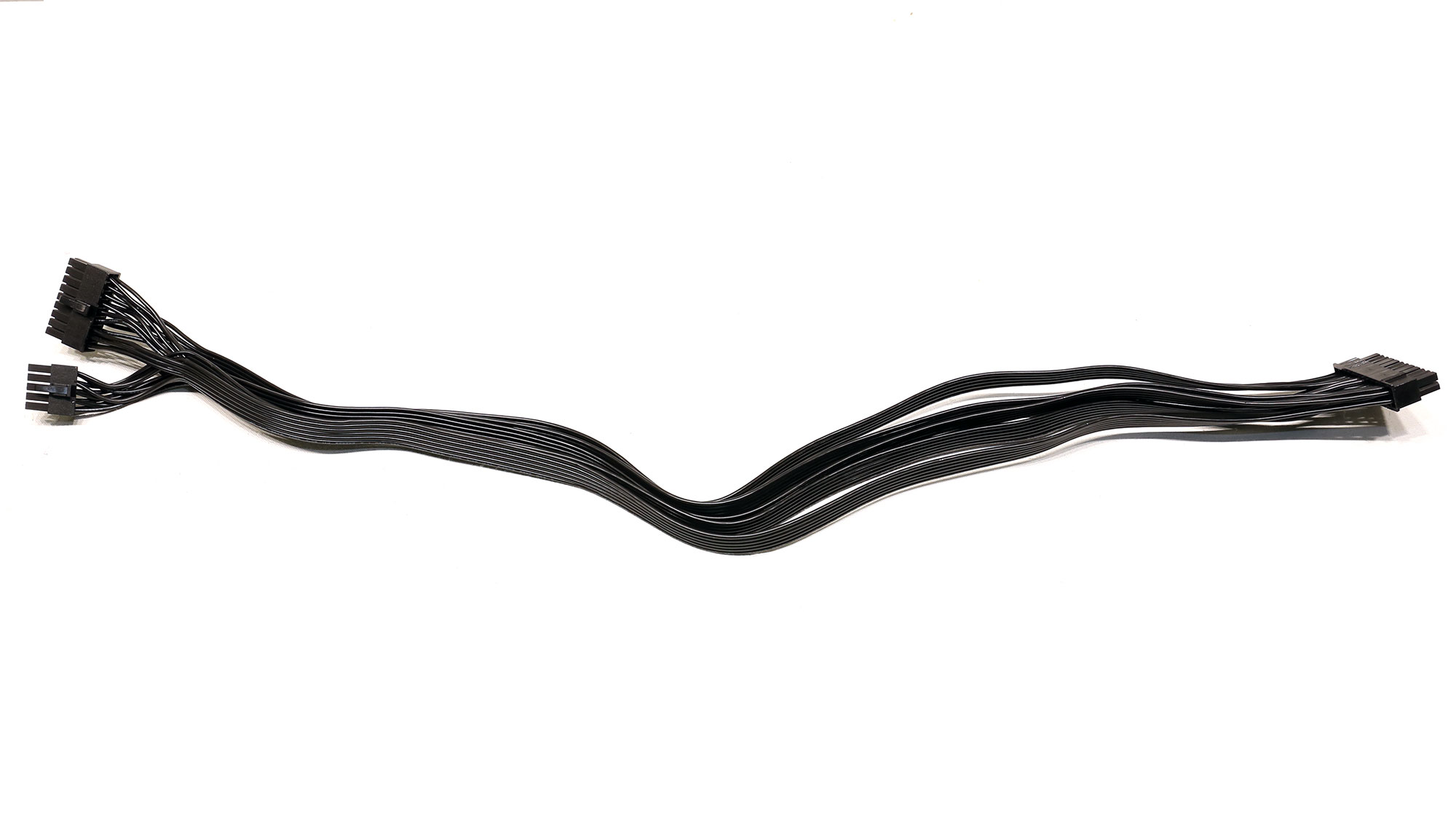
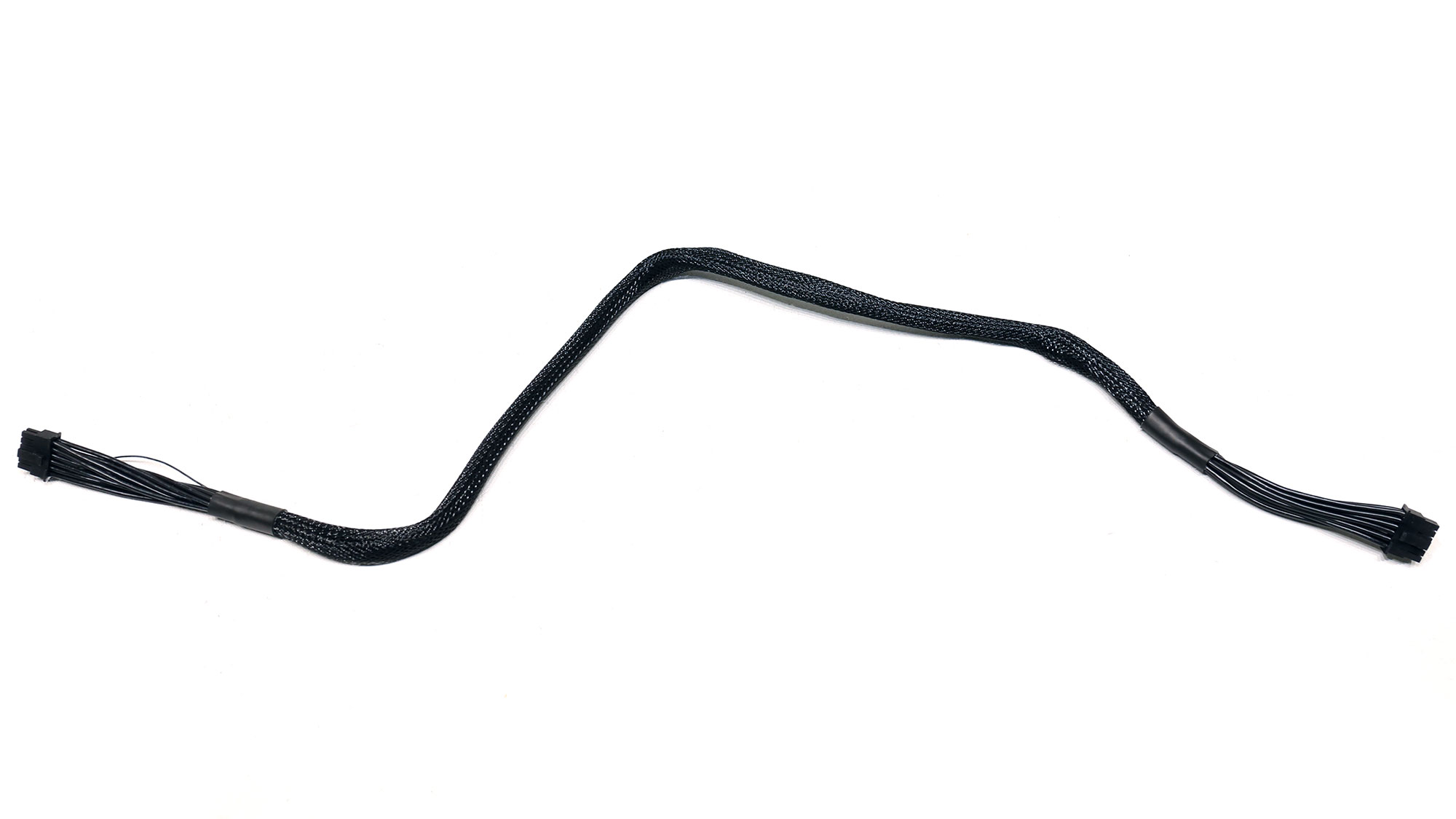
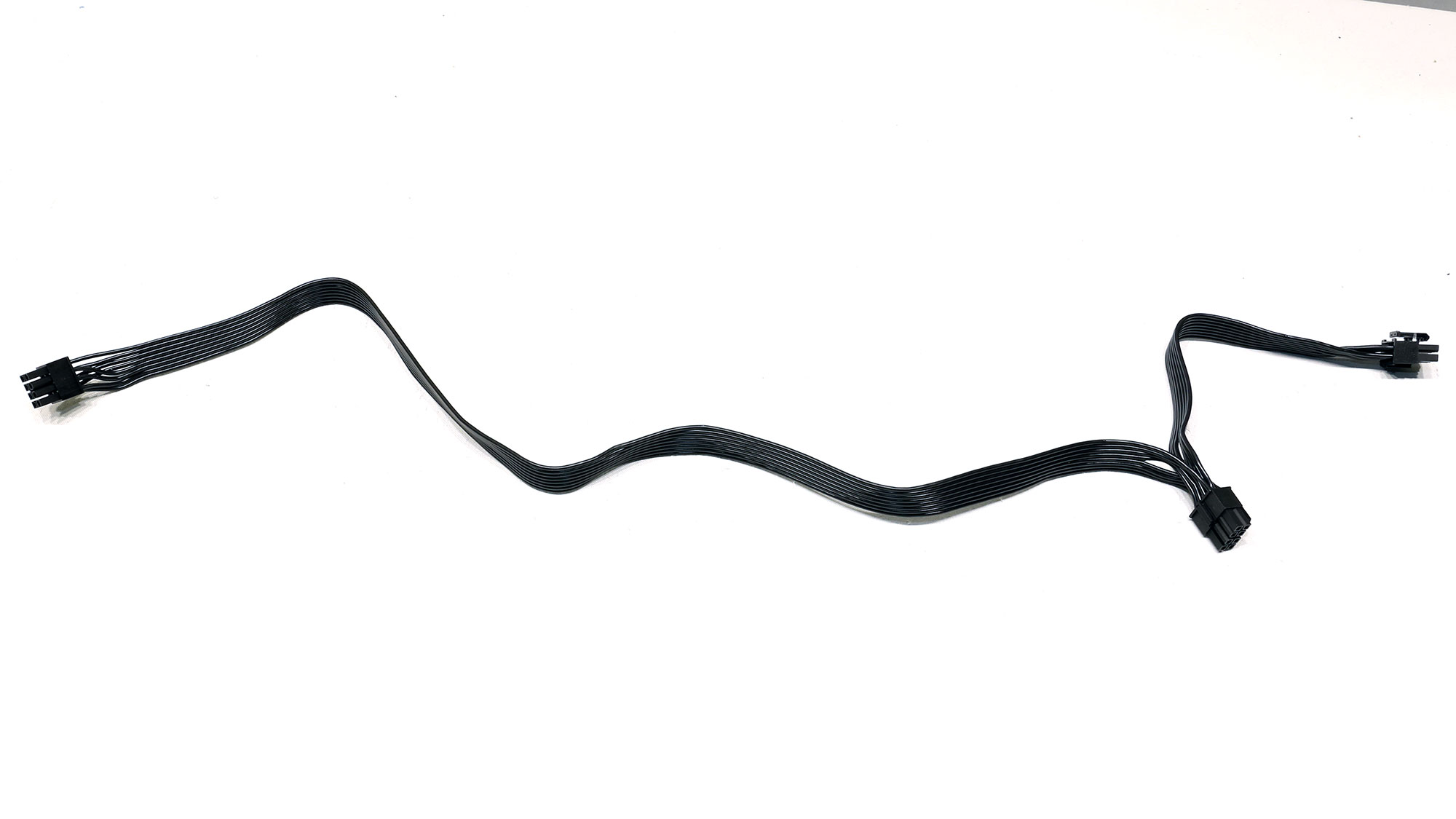
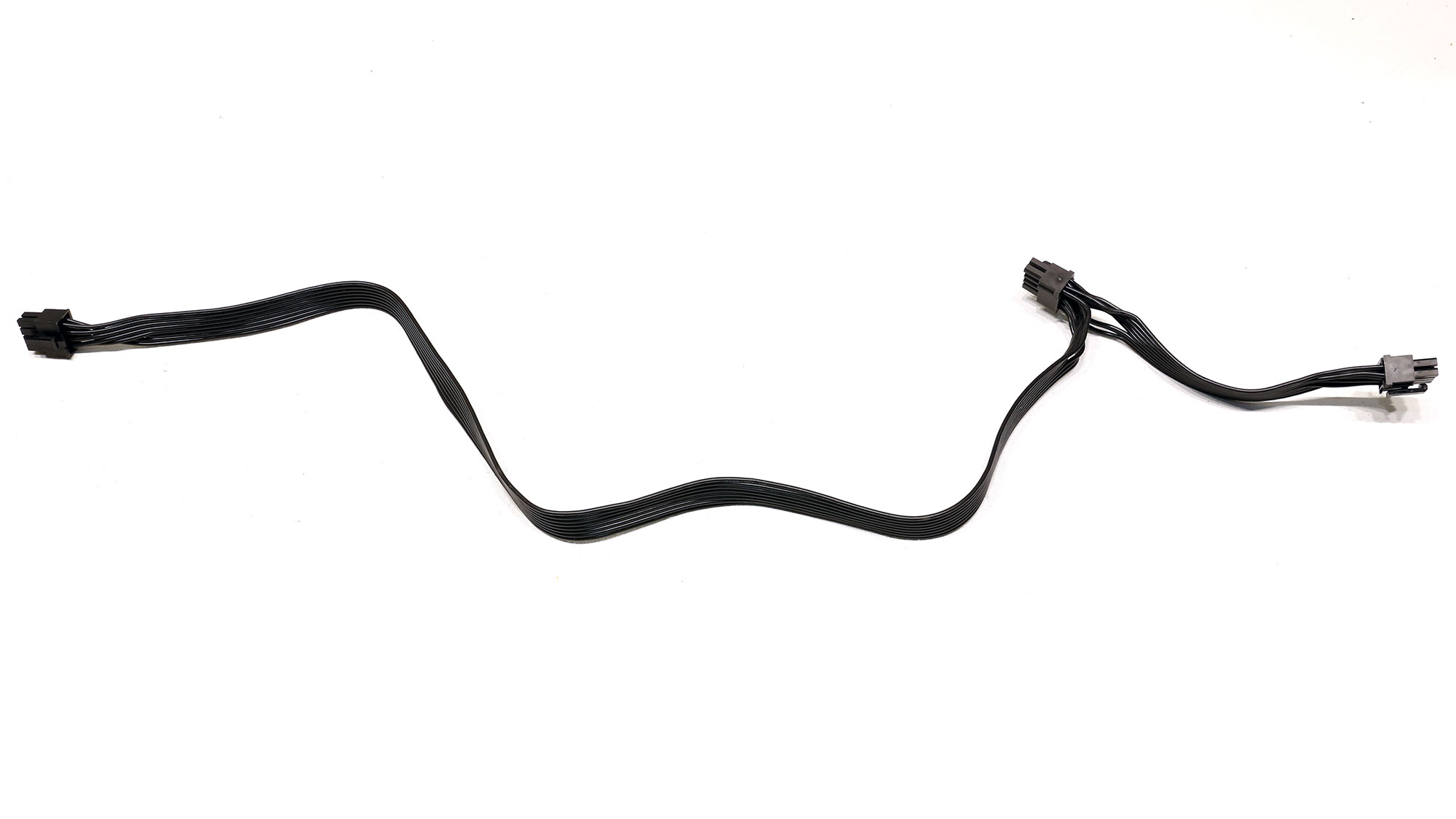
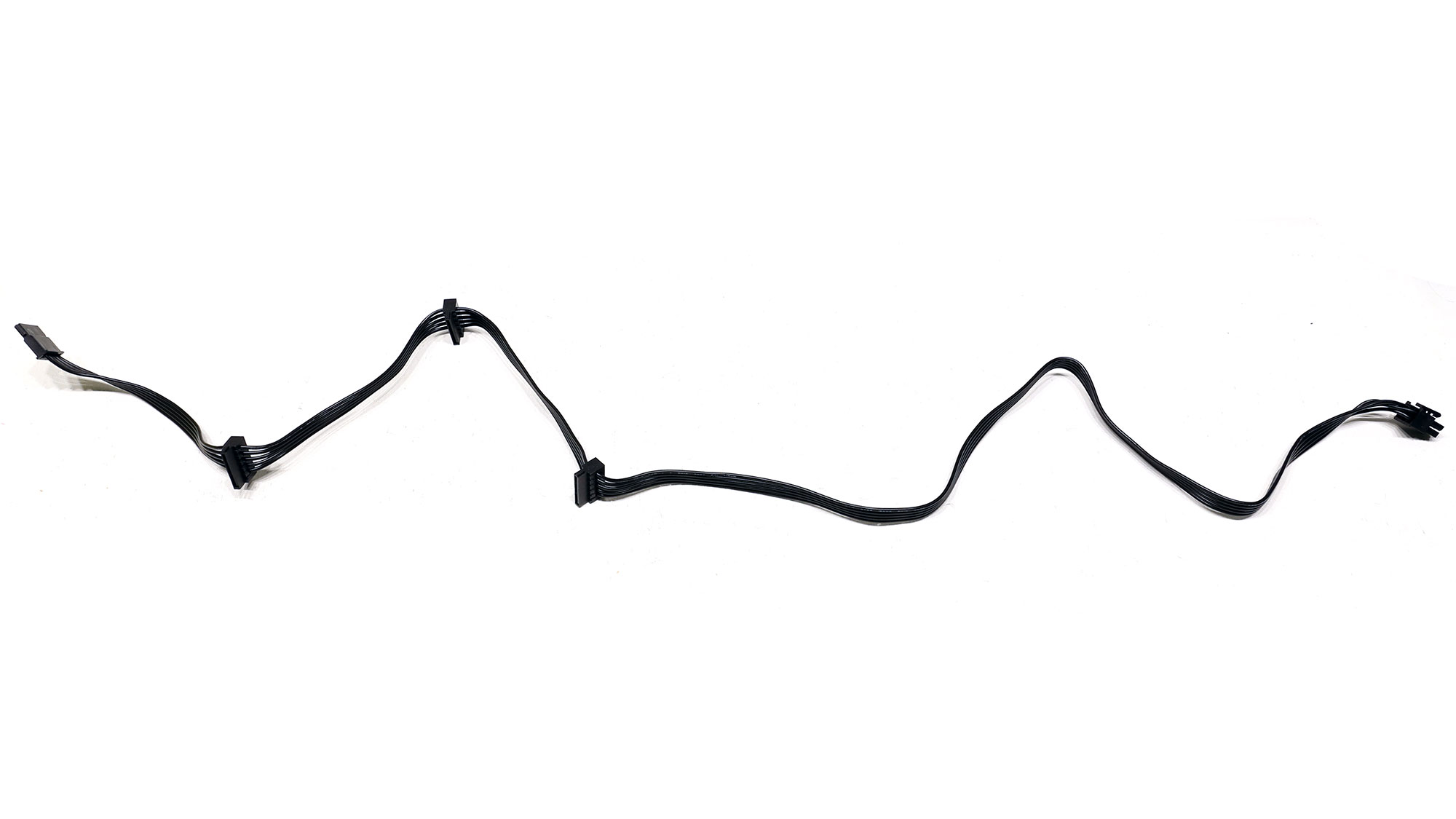
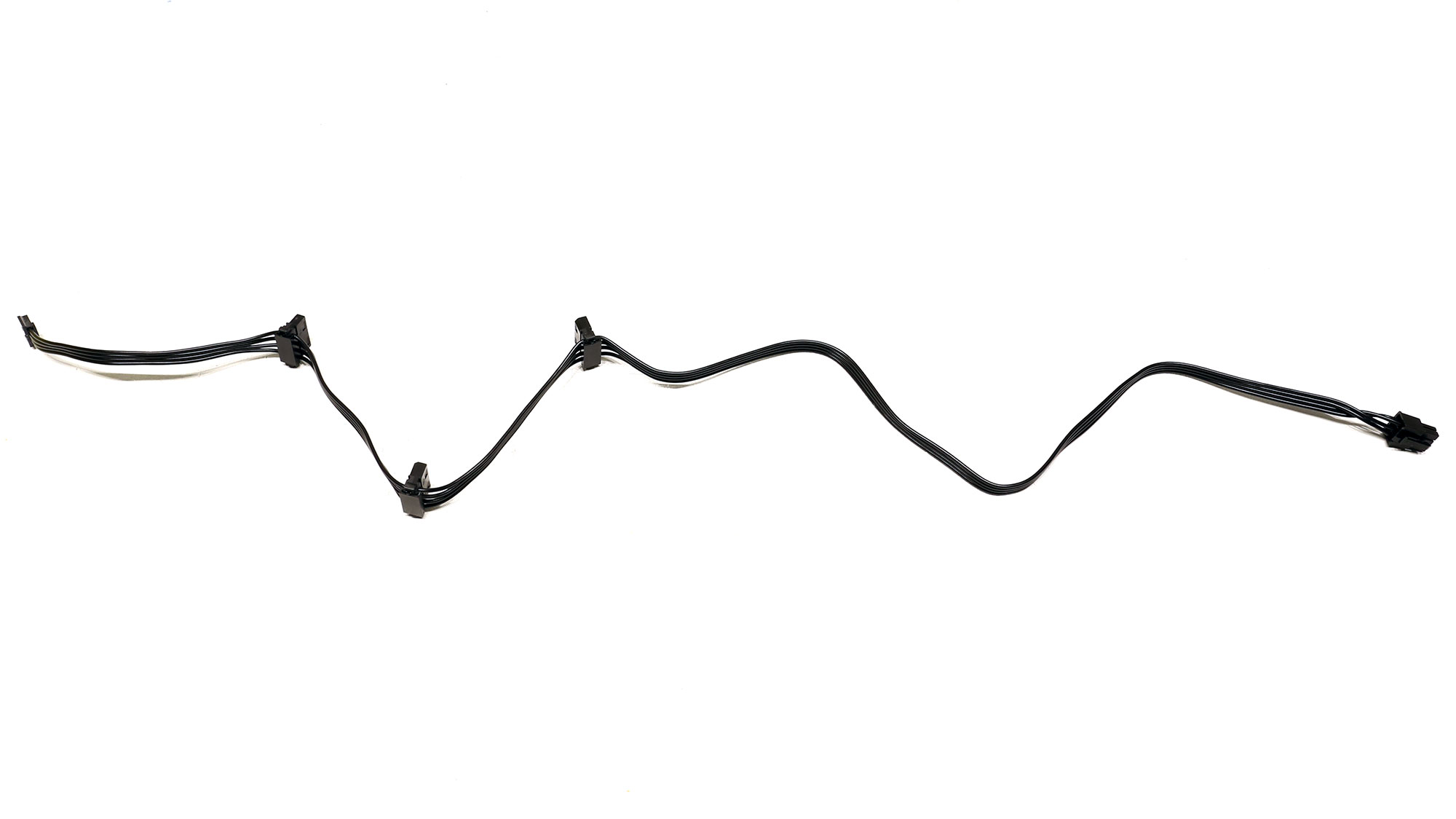
Component Analysis of Gigabyte UD1000GM PG5
We strongly encourage you to have a look at our PSUs 101 article, which provides valuable information about PSUs and their operation, allowing you to better understand the components we're about to discuss.
Get Tom's Hardware's best news and in-depth reviews, straight to your inbox.
| General Data | - |
| Manufacturer (OEM) | MEIC |
| PCB Type | Double Sided |
| Primary Side | - |
| Transient Filter | 4x Y caps, 2x X caps, 2x CM chokes, 1x MOV, 1x Chipown PN8200 (Discharge IC) |
| Inrush Protection | NTC Thermistor NTC-5D15 (5 Ohm) |
| Bridge Rectifier(s) | 2x GBU1506 (800V, 15A @ 100°C) |
| APFC MOSFETs | 2x NCE Power NCE65TF099 (650V, 24A @ 100°C, Rds(on): 0.109Ohm) |
| APFC Boost Diode | 1x STMicroelectronics STPSC10H065 (650V, 10A @ 135°C) |
| Bulk Cap(s) | 1x Nippon Chemi-Con (400V, 1000uF, 2,000h @ 105°C, KMW) |
| Main Switchers | 2x NCE Power NCE65TF099 (650V, 24A @ 100°C, Rds(on): 0.109Ohm) |
| APFC Controller | Champion CM6500UNX |
| Resonant Controller | Champion CM6901X |
| Topology |
Primary side: APFC, Half-Bridge & LLC converter Secondary side: Synchronous Rectification & DC-DC converters |
| Secondary Side | - |
| +12V MOSFETs | 6x Nexperia PSMN1R4-40YLD (40V, 214A @ 100°C, Rds(on): 1.4mOhm) |
| 5V & 3.3V | DC-DC Converters |
| Filtering Capacitors |
Electrolytic: 7x Teapo (3-6,000h @ 105°C, SY), 4x Lelon (4-7,000h @ 105°C, RXW), 3x Teapo (2,000h @ 105°C, SH), 8x Lelon (4-10,000h @ 105°C, RZW), 1x Lelon (105°C, RG) |
| Supervisor IC | Weltrend WT7502R (OVP, UVP, SCP, PG) |
| Fan Model | Jamicon KF1225H1H-AA (120mm, 12V, 0.35A, Rifle Bearing Fan) |
| 5VSB Circuit | - |
| Rectifier | 1x JF Semiconductor SP10U45L SBR (45V, 10A) |
| Standby PWM Controller | PR8109T |
| -12V Circuit | - |
| Controller | Axelite Technology AX3111 |
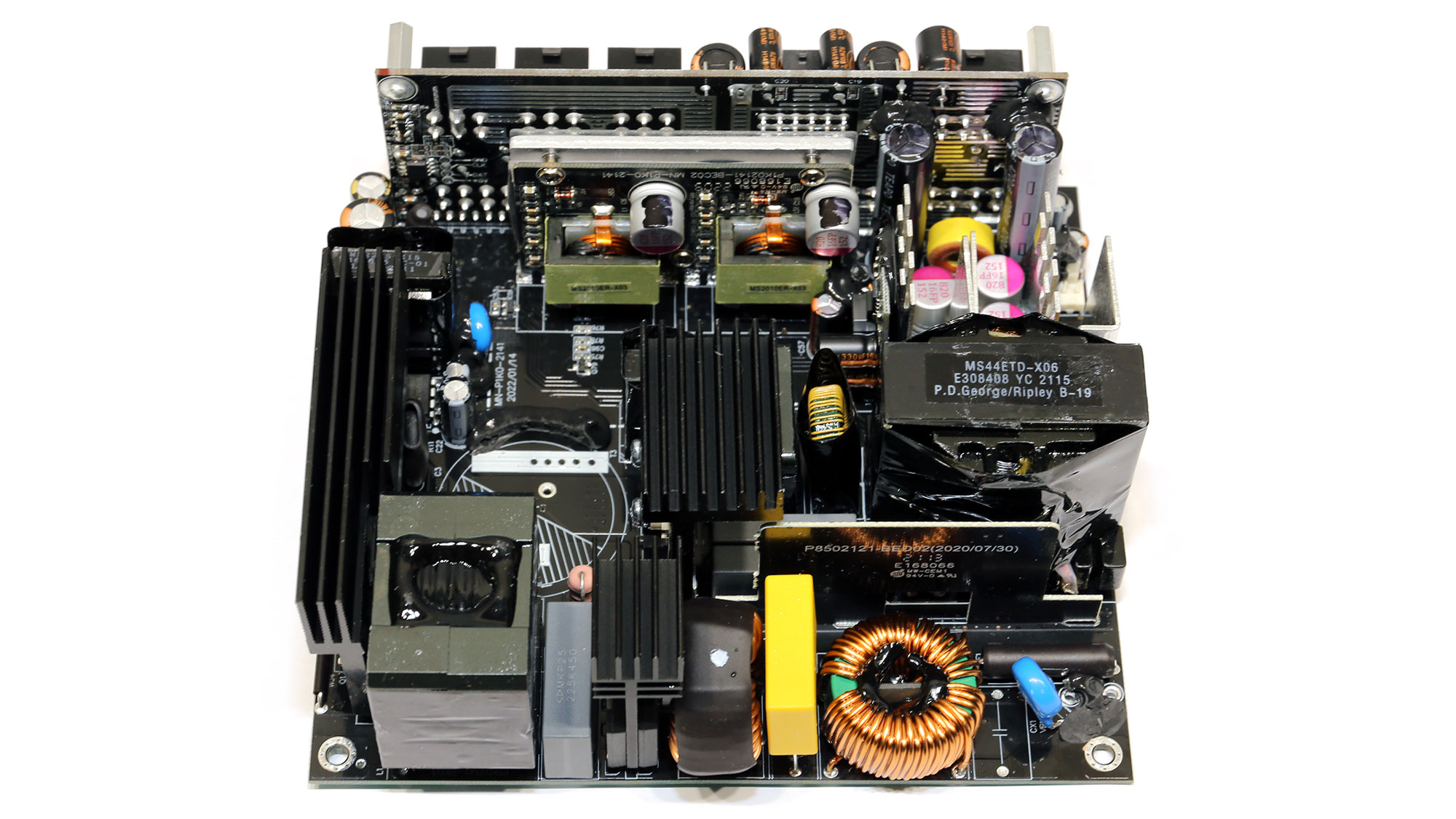

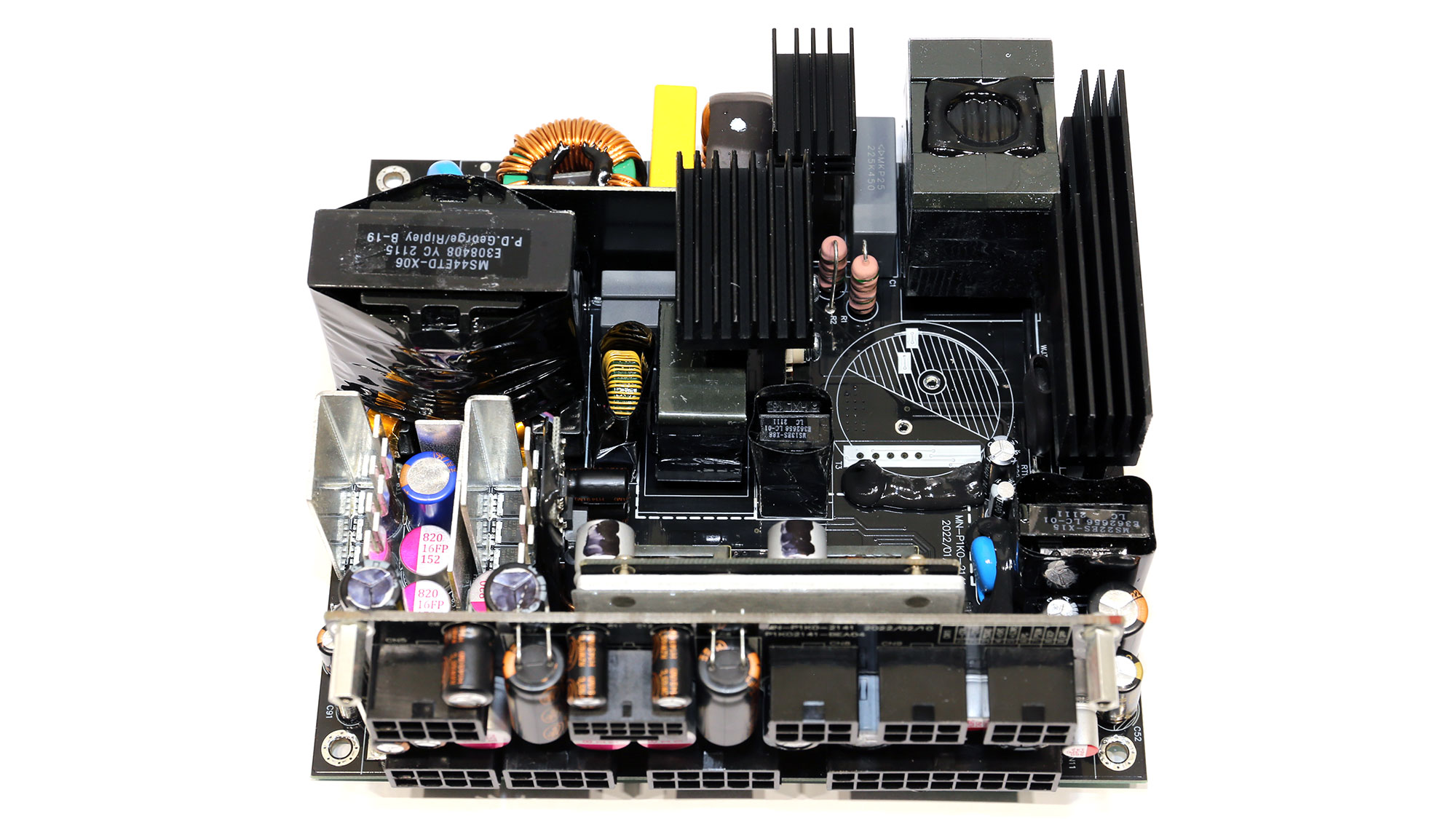
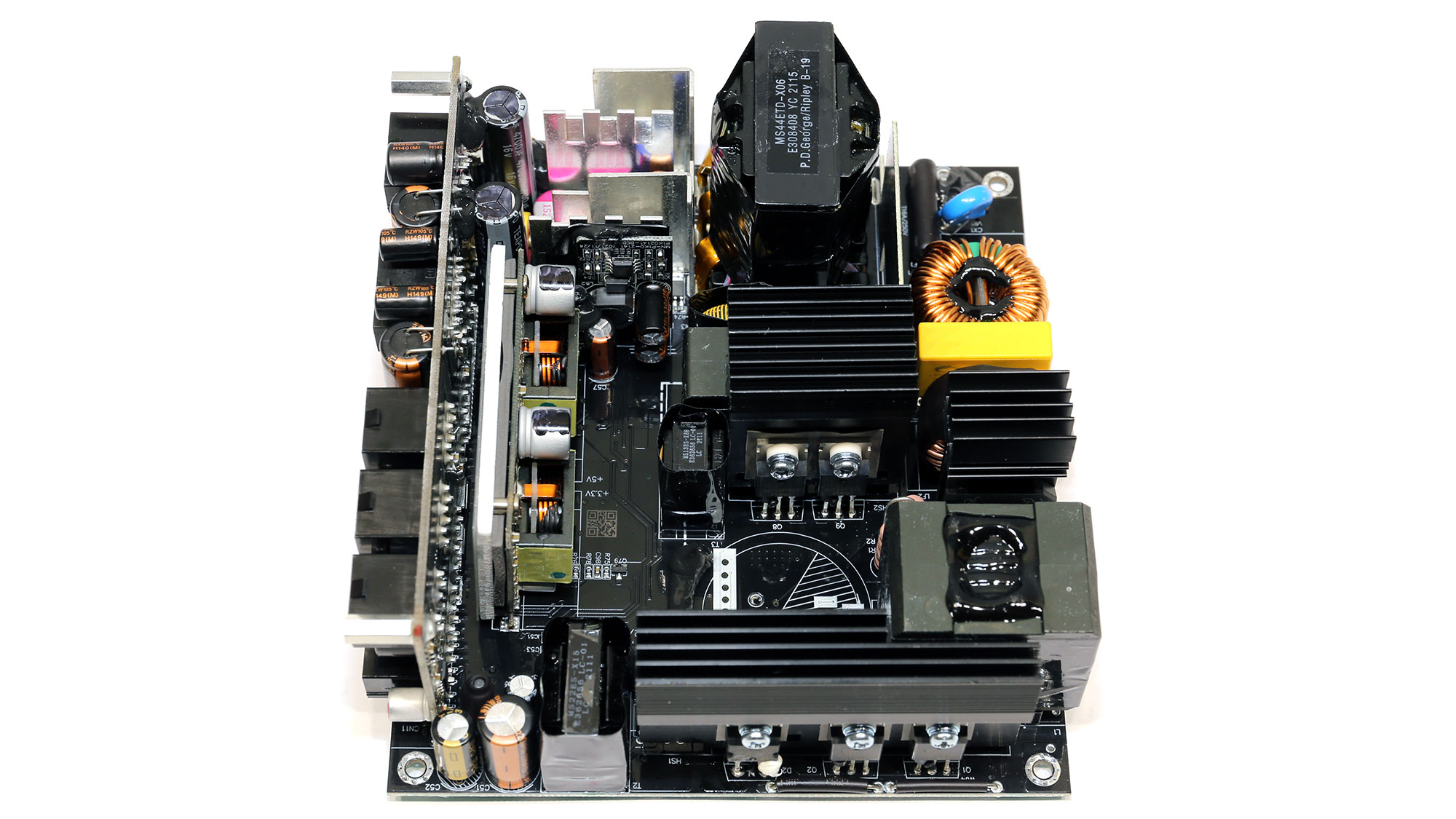
This is an upgraded version of the platform used in the PG1000M. We spotted a significant difference in the -12V rail, where MEIC, the OEM of this platform, used a dedicated daughter-board which is overkill, given that -12V is not used anymore. We wonder why PSU manufacturers and brands still have it. The ATX spec has this rail as optional for quite some time now.
The platform uses a modern design with a half-bridge topology on the primary side and an LLC resonant converter. In contrast, on the secondary side, we find a synchronous design where FETs regulate the 12V rail, and a pair of DC-DC converters handle the minor rails.

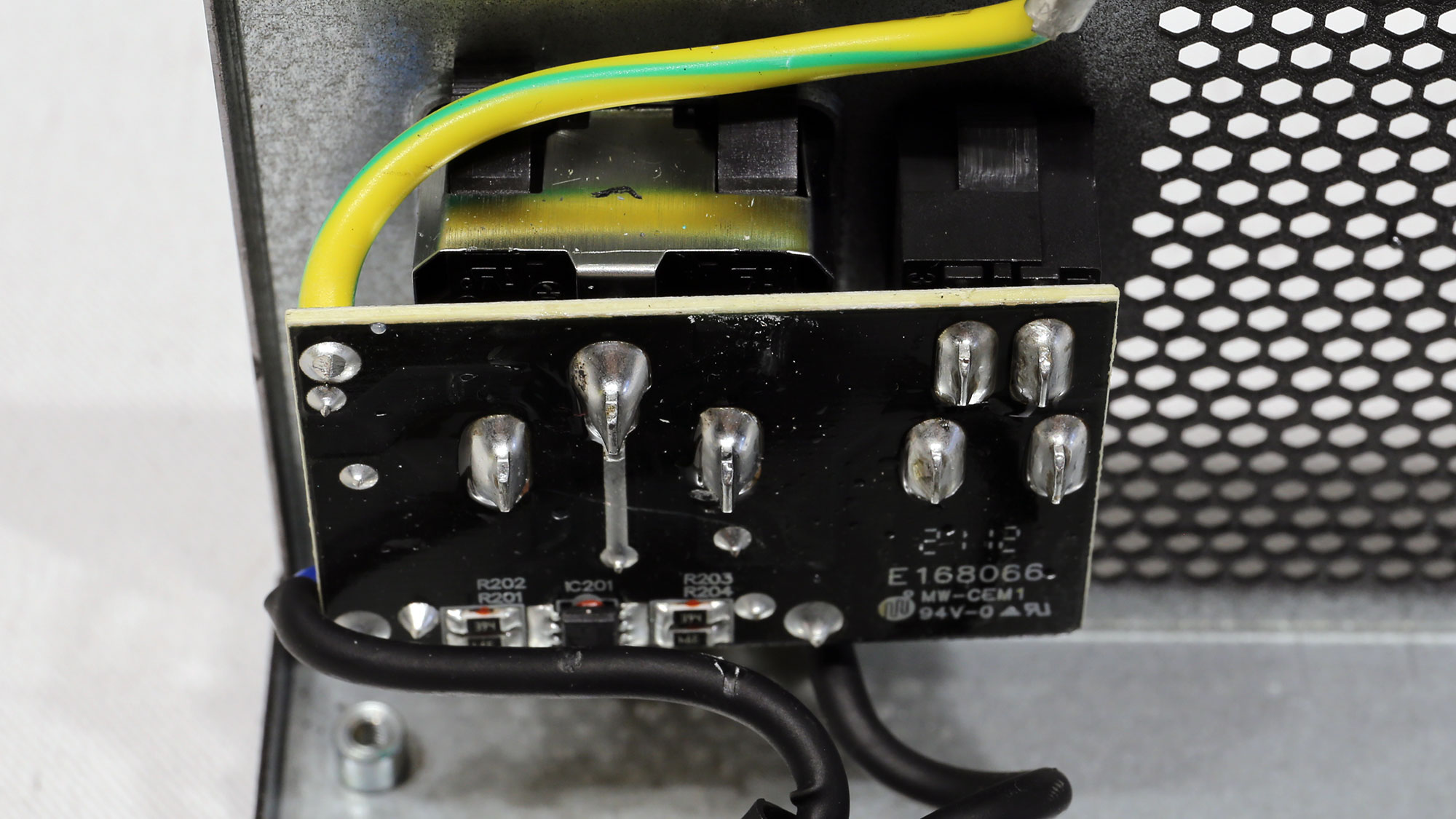
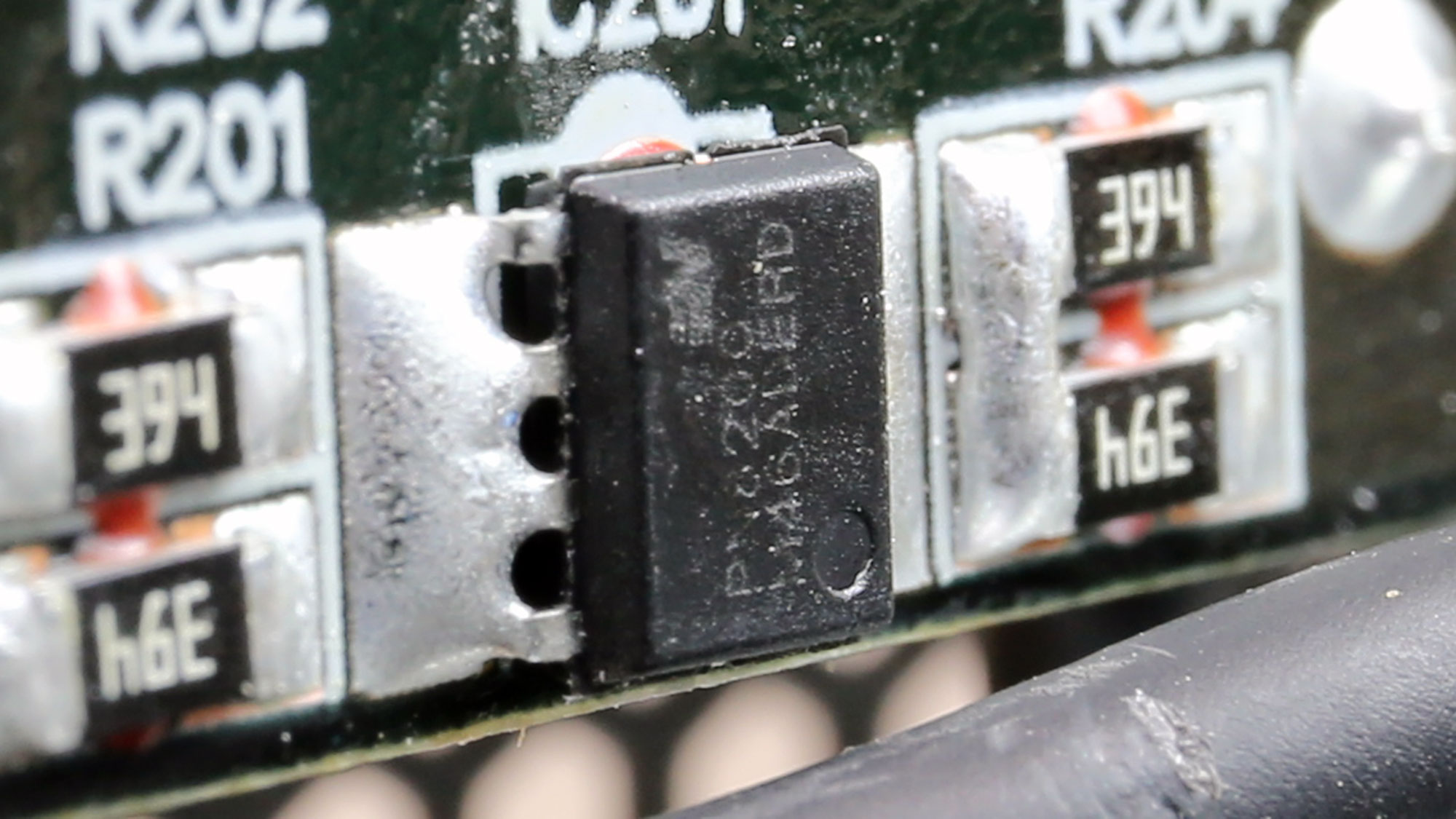


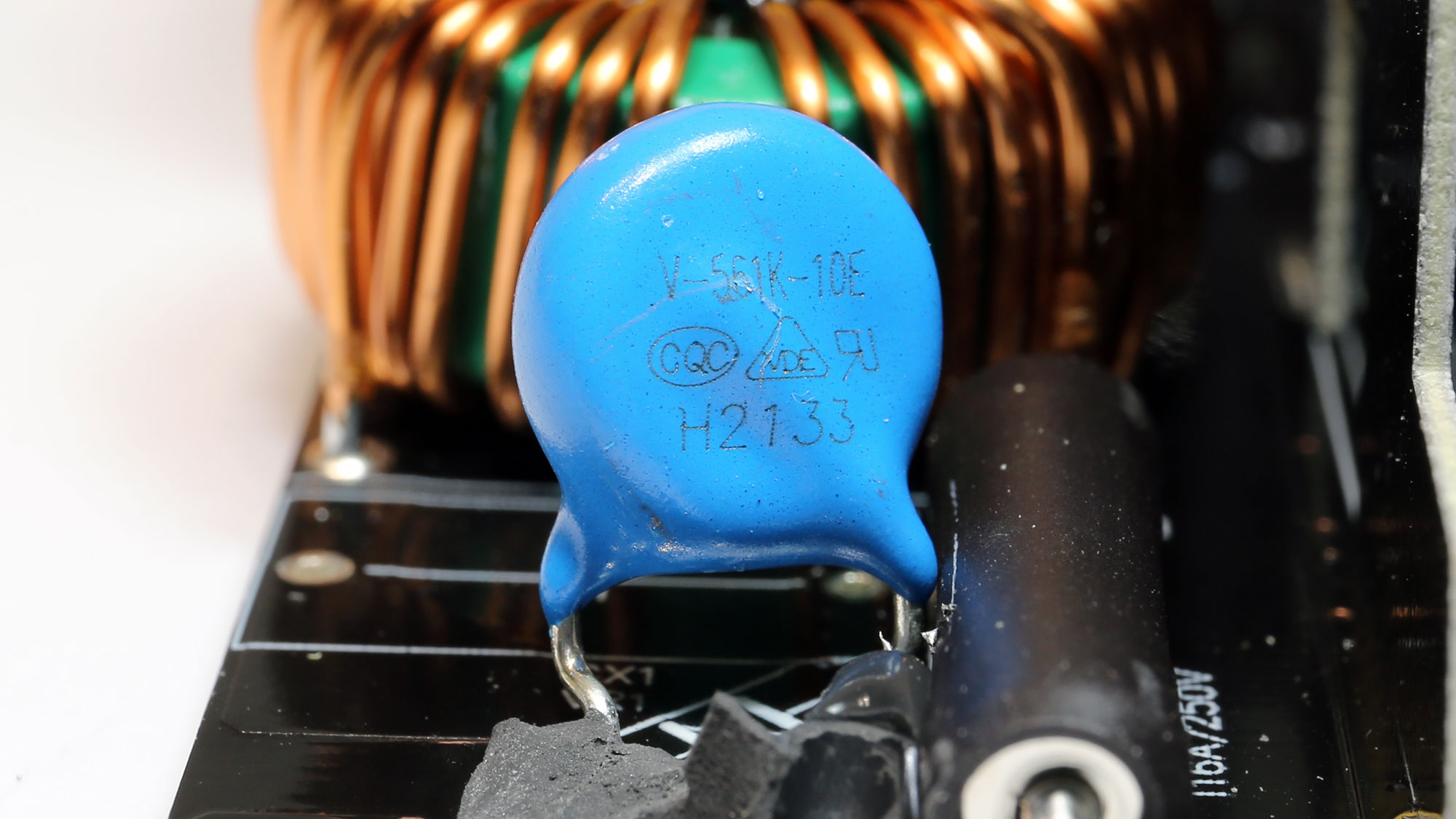
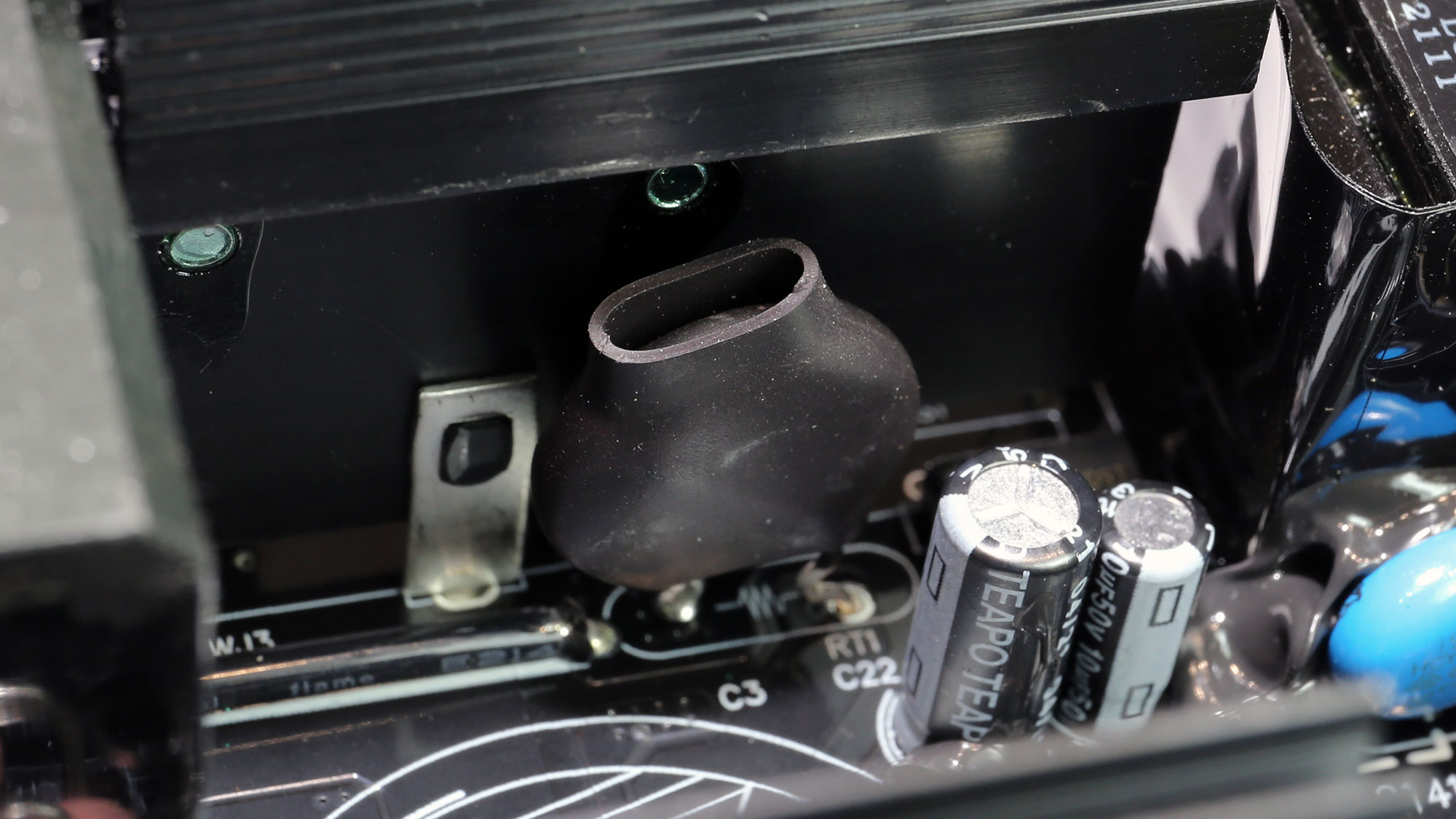
The transient/EMI filter includes all necessary parts and a discharge IC, providing a slight efficiency boost. The transient filter includes an MOV, and there is also an NTC thermistor, but a bypass relay does not support the latter. The 750W and 850W units of the same line have such relays, but the 1000W lacks one because there is no space on the PCB. They should use a different PCB or layout in the 1000W model because the bypass relay is essential for inrush current protection.
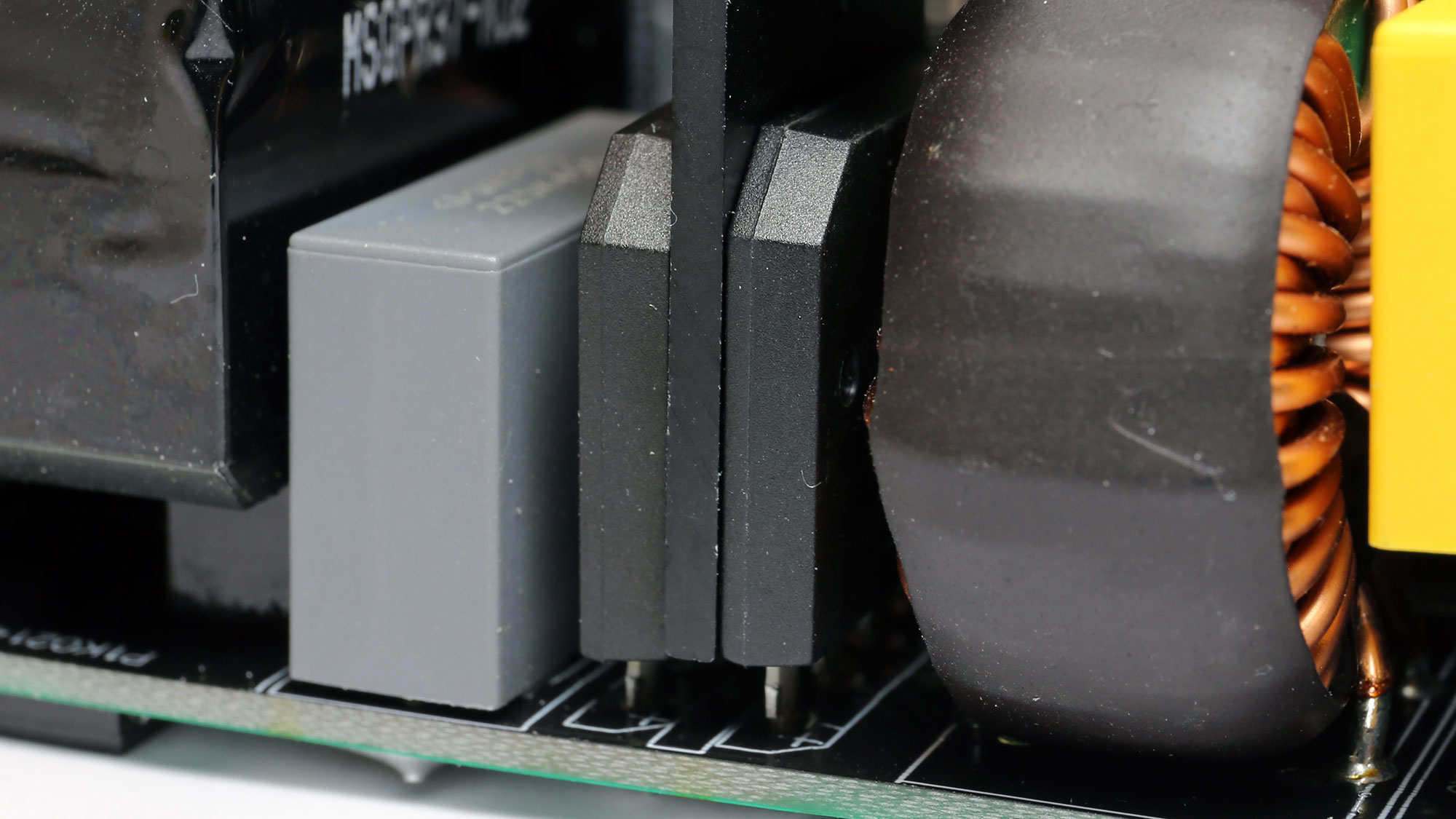
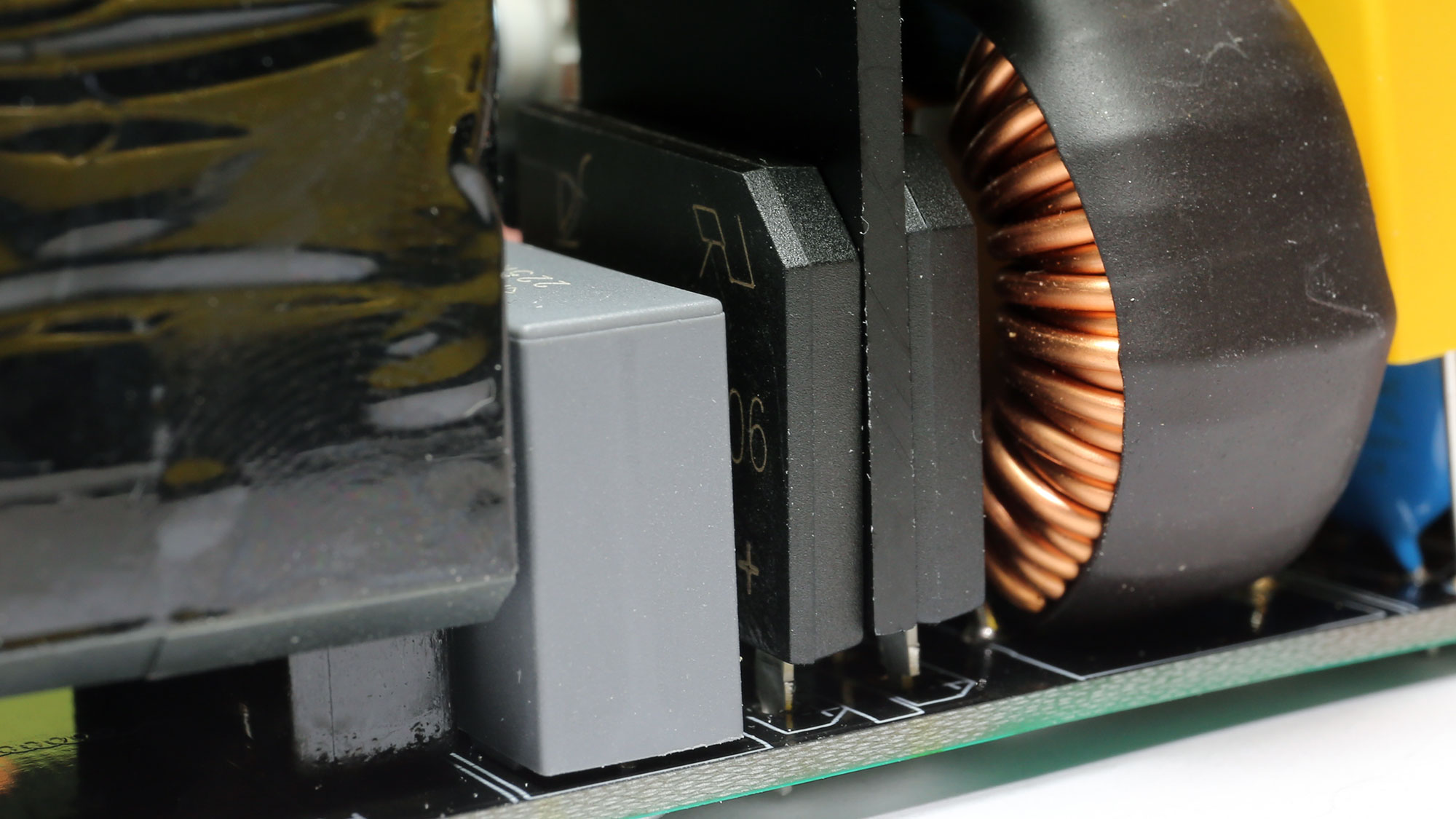
The bridge rectifiers can handle up to 30A combined, which is enough for this PSU.
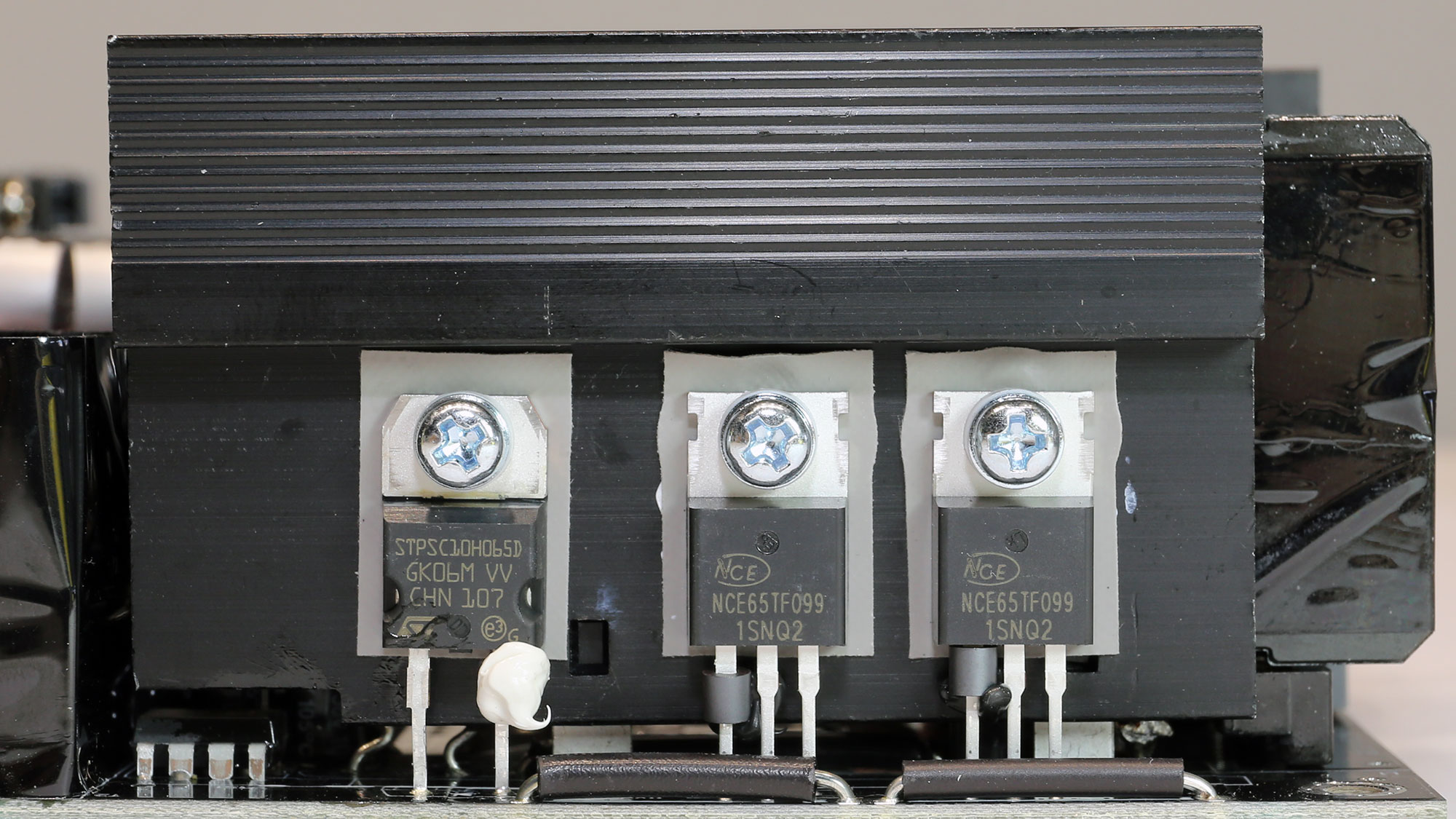
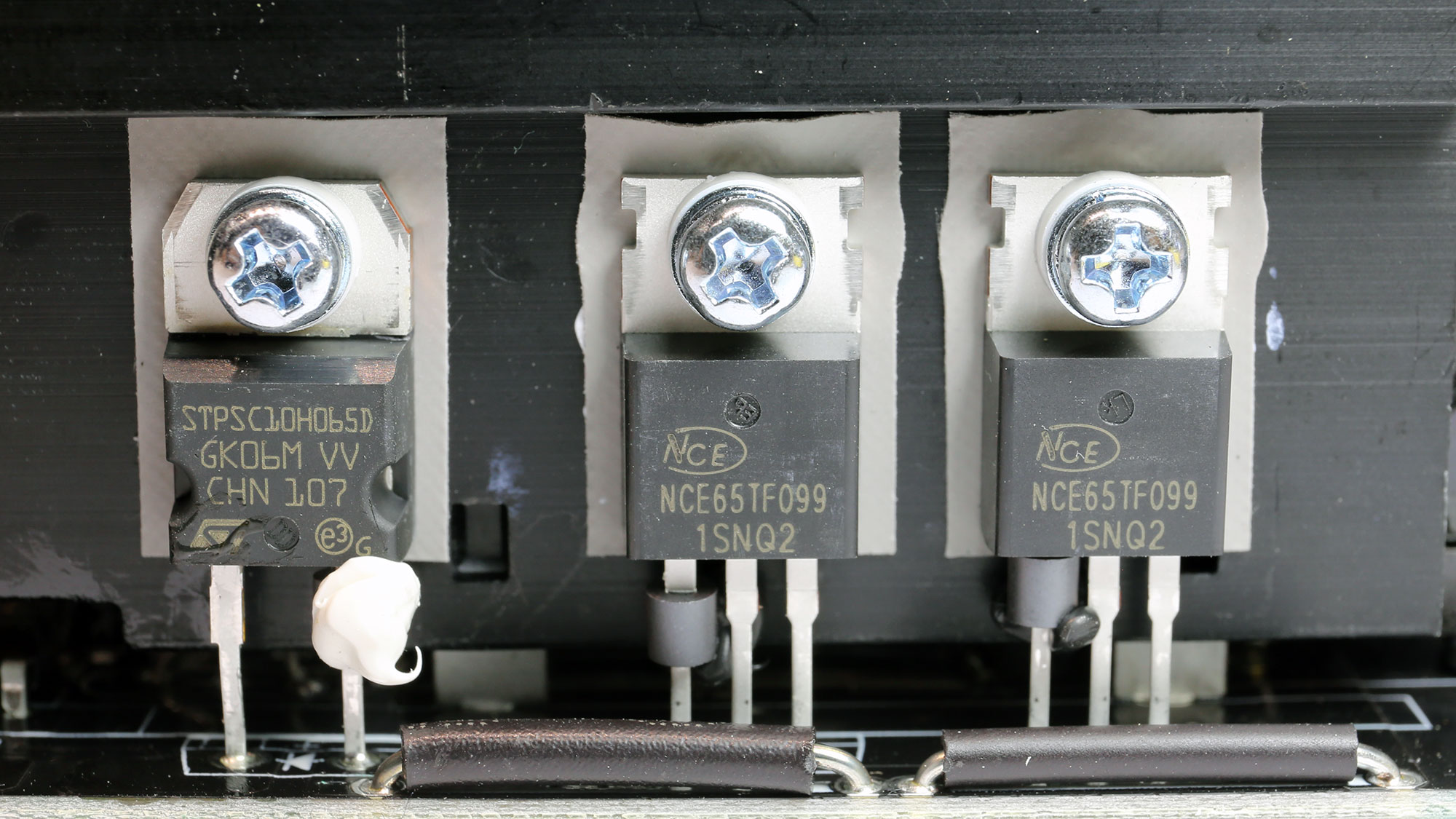
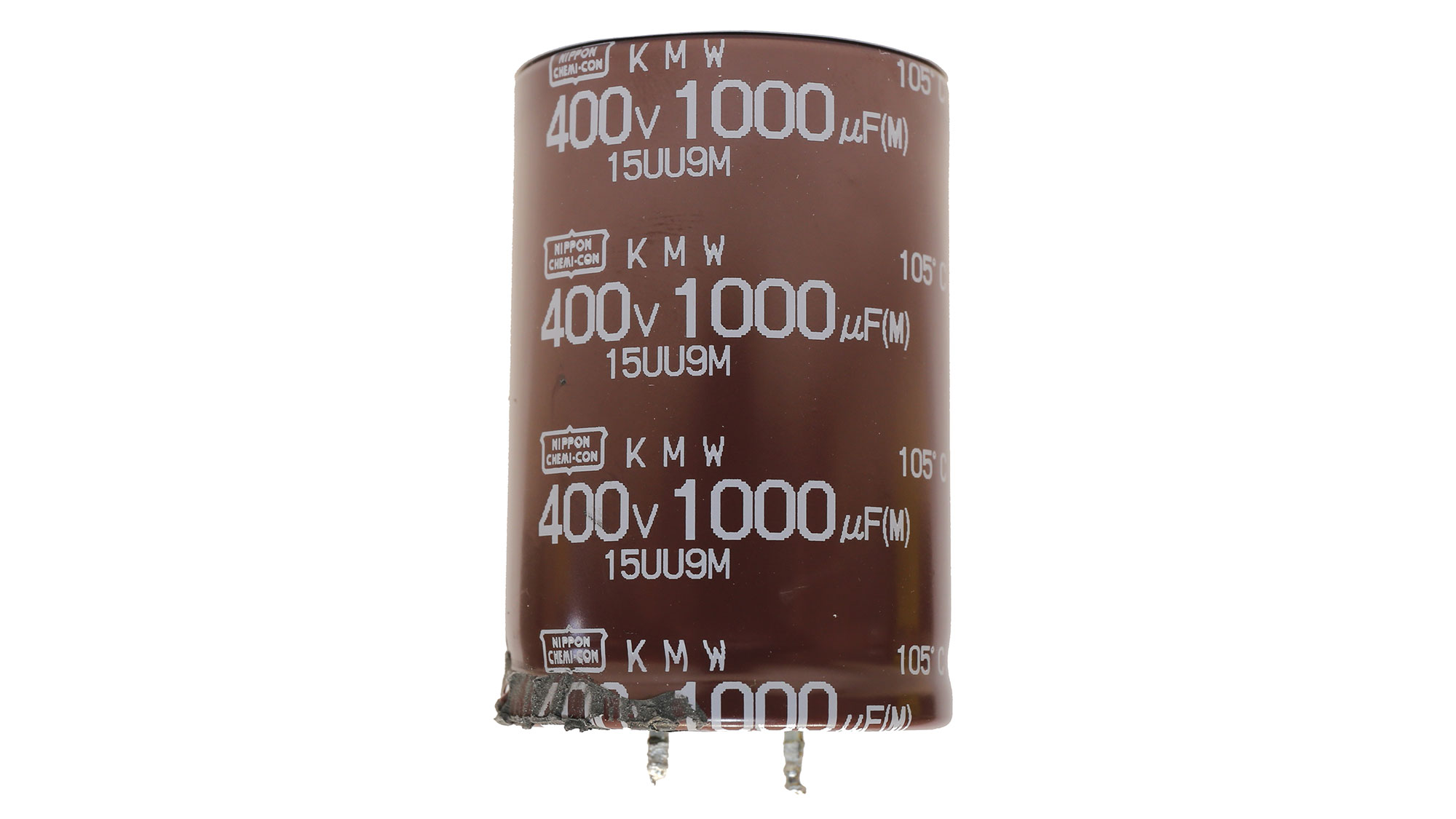
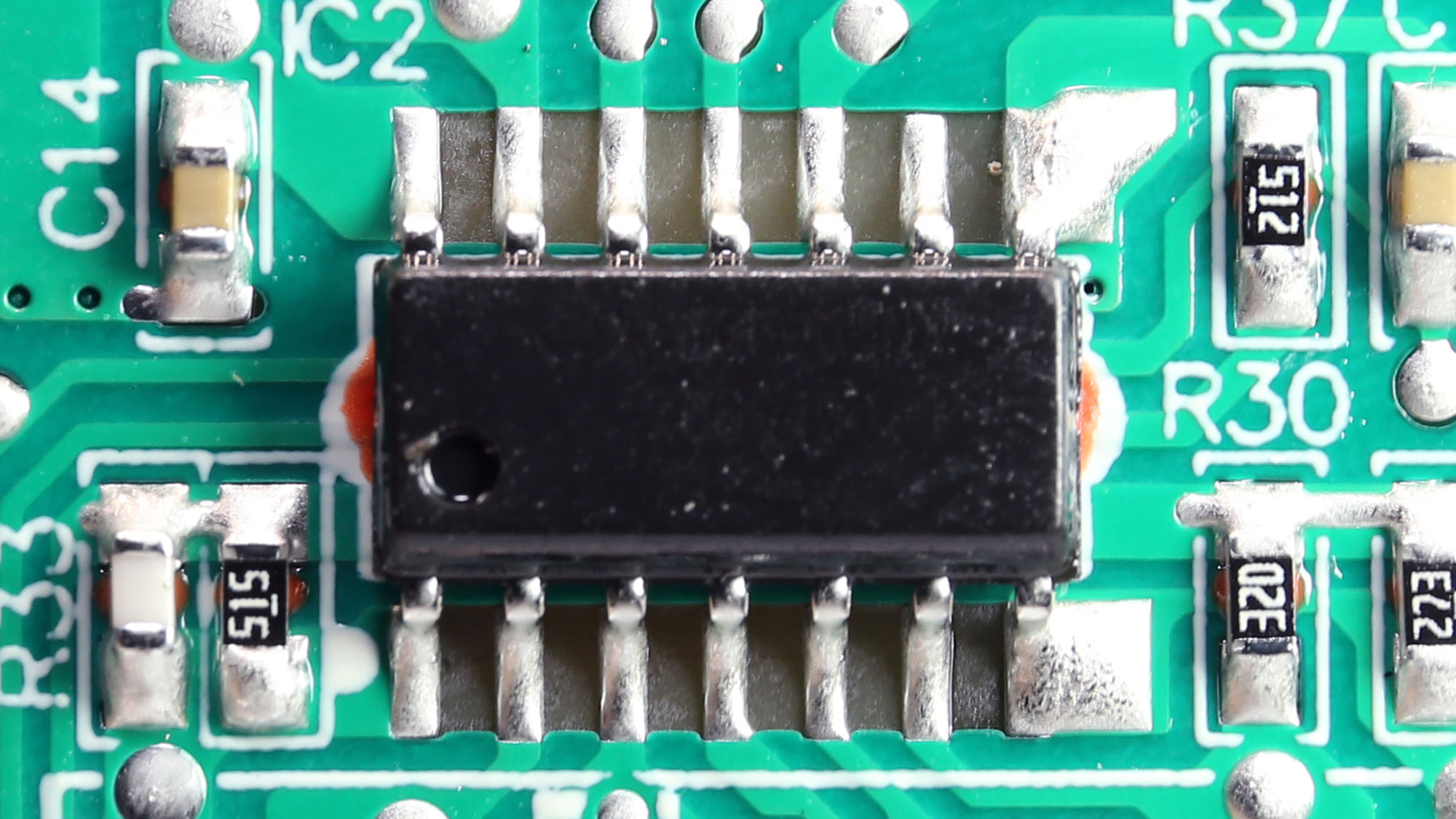
The APFC converter uses two NCE Power FETs and an STMicroelectronics boost diode with 10A current ratings. The bulk cap is by Chemi-Con and is among the largest we have seen. There was no room for a pair of caps installed in parallel, so they had to use a single large one. The APFC controller is a Champion CM6500.
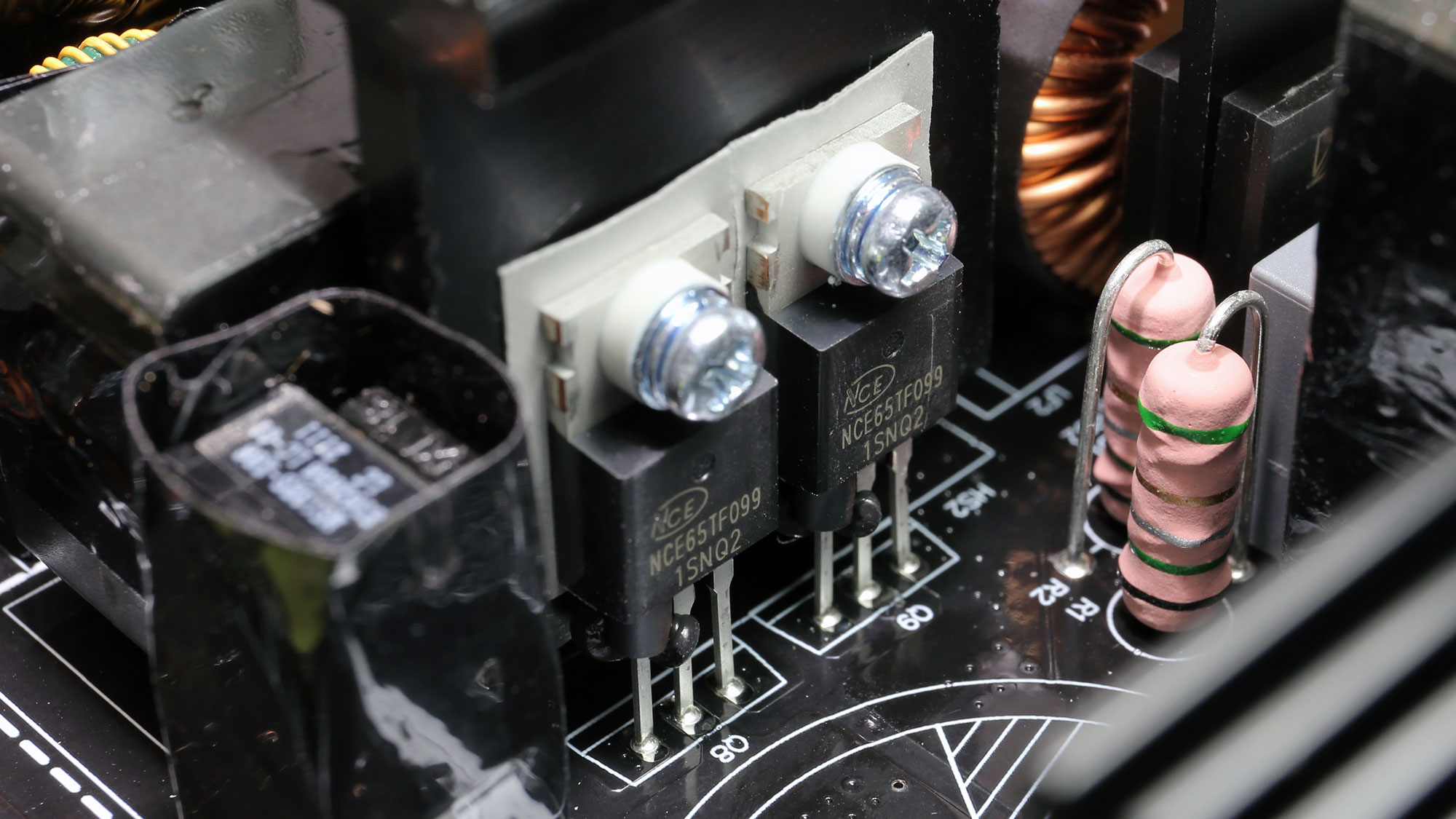
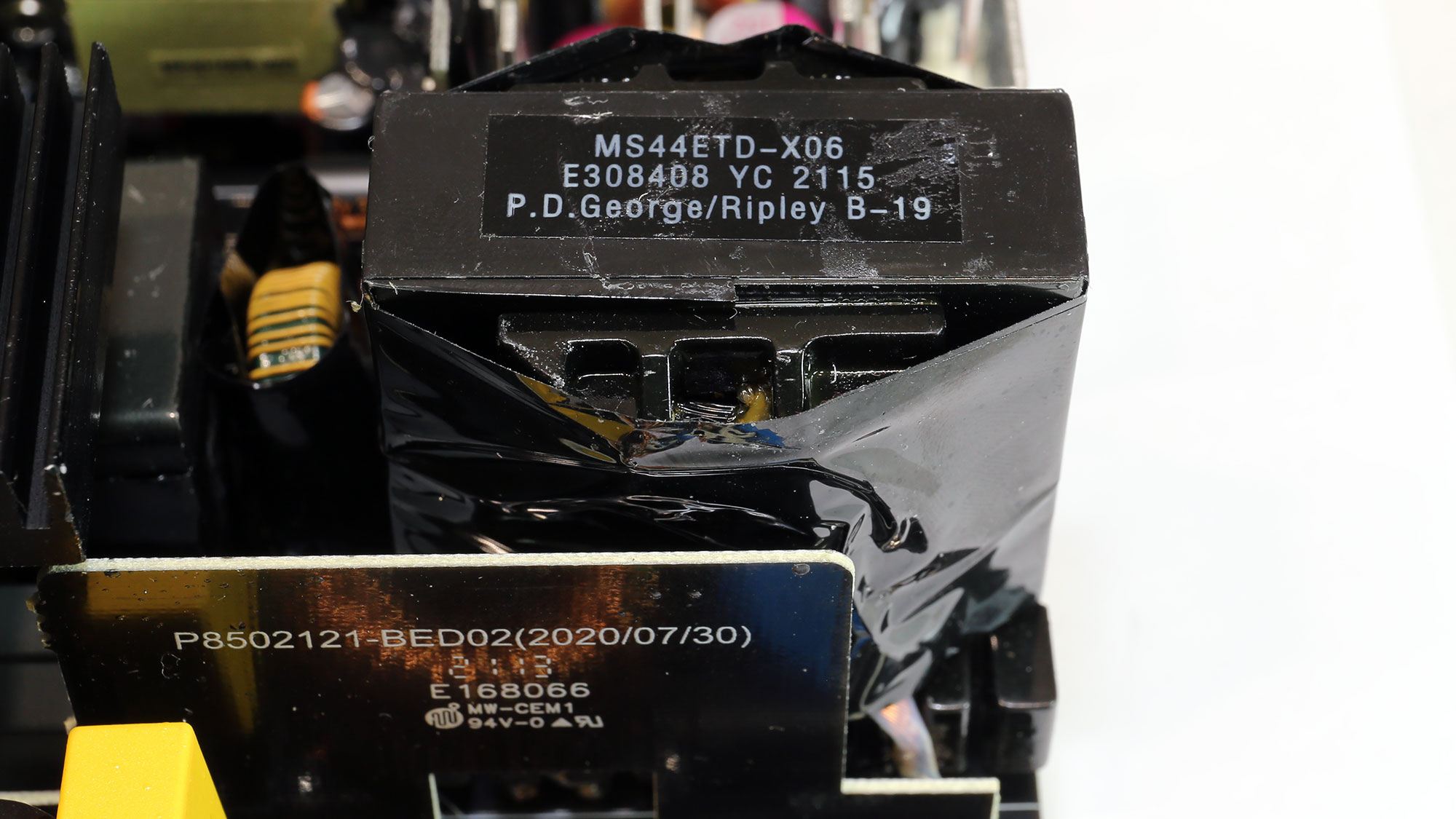
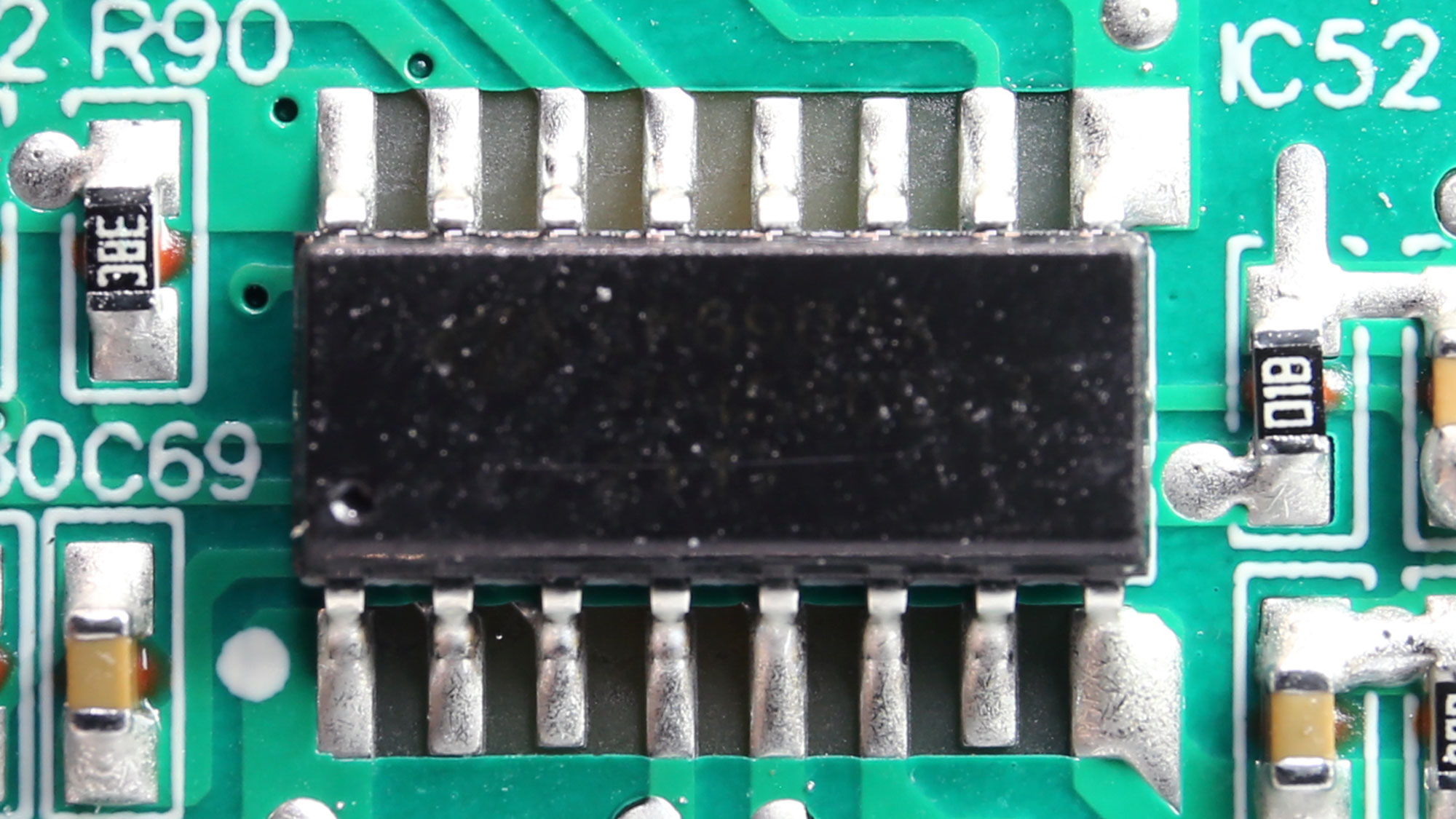
The main FETs are installed in a half-bridge topology. An LLC resonant converter is also used for increased efficiency. Lastly, the resonant controller is a Champion CM6901X.

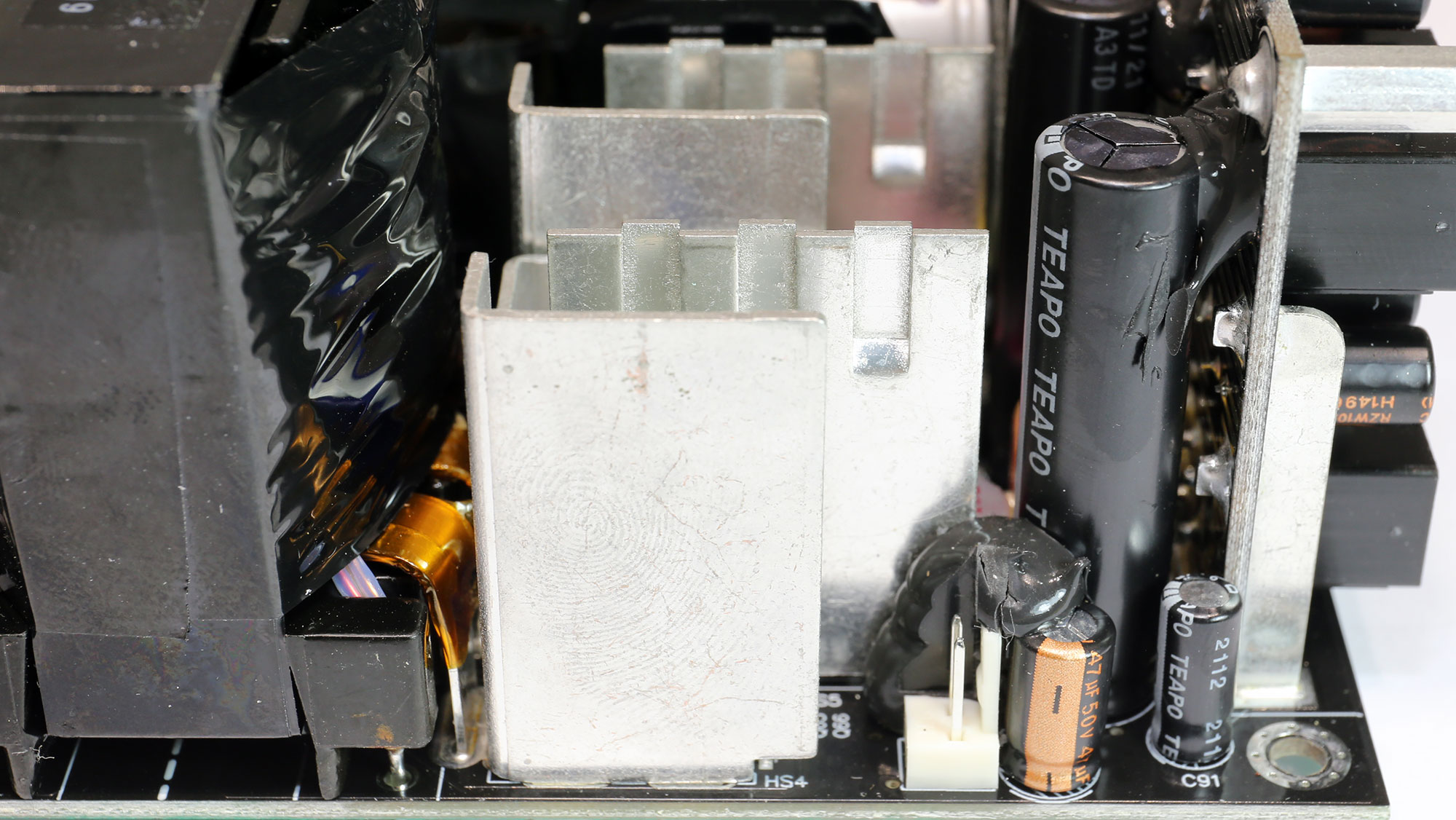
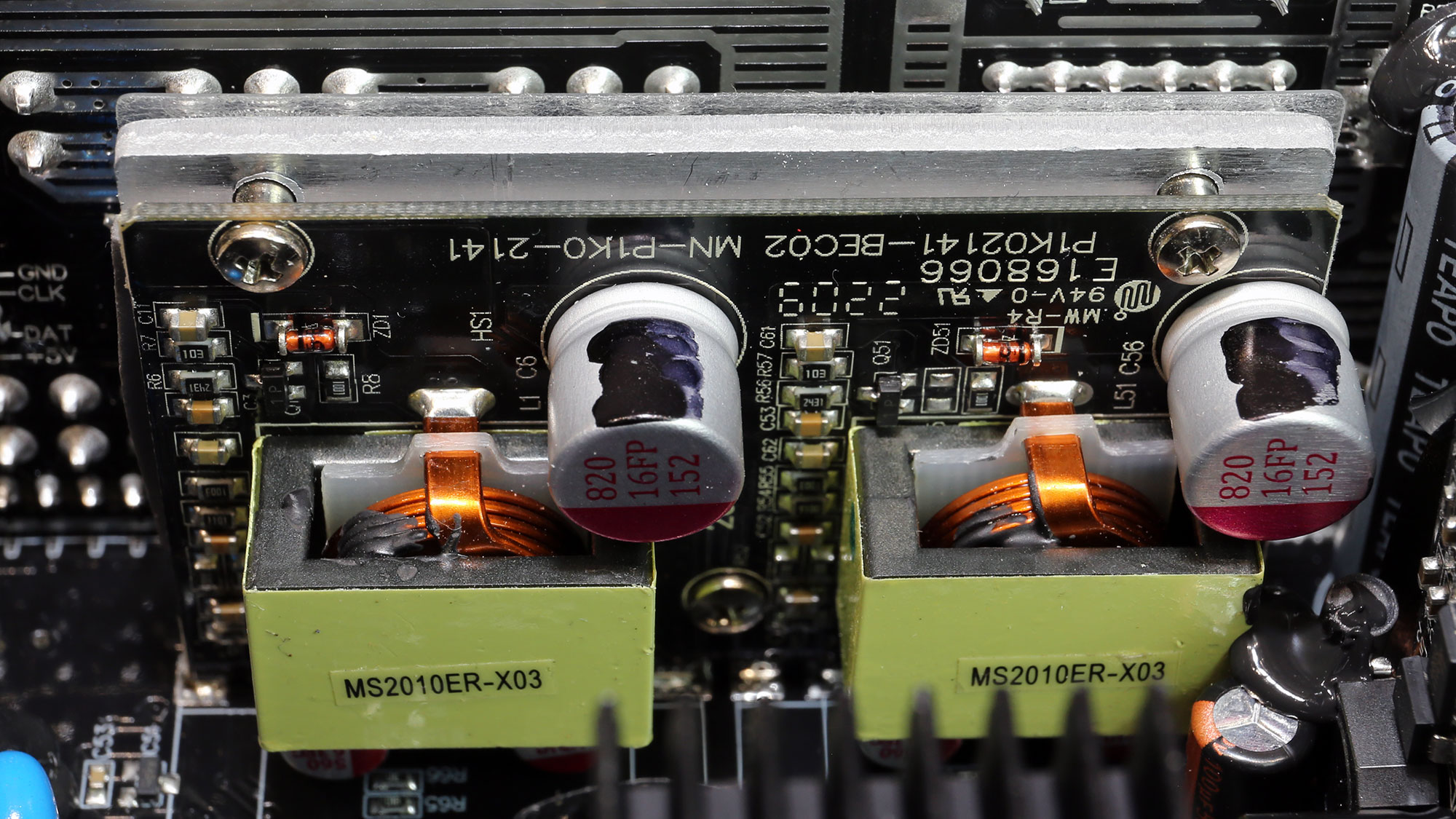
Six FETs regulate the 12V rail and two DC-DC converters generate the minor rails.
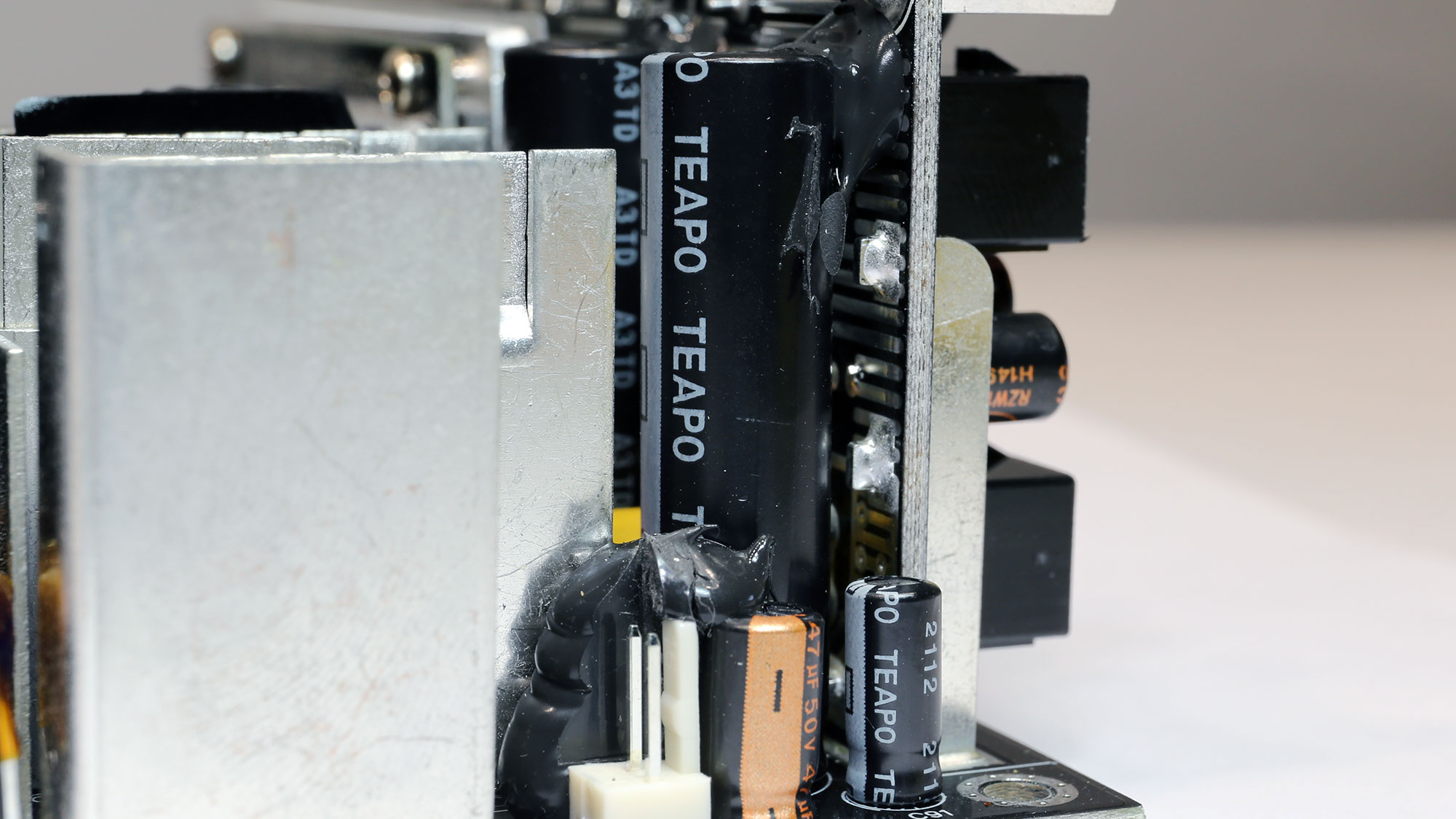
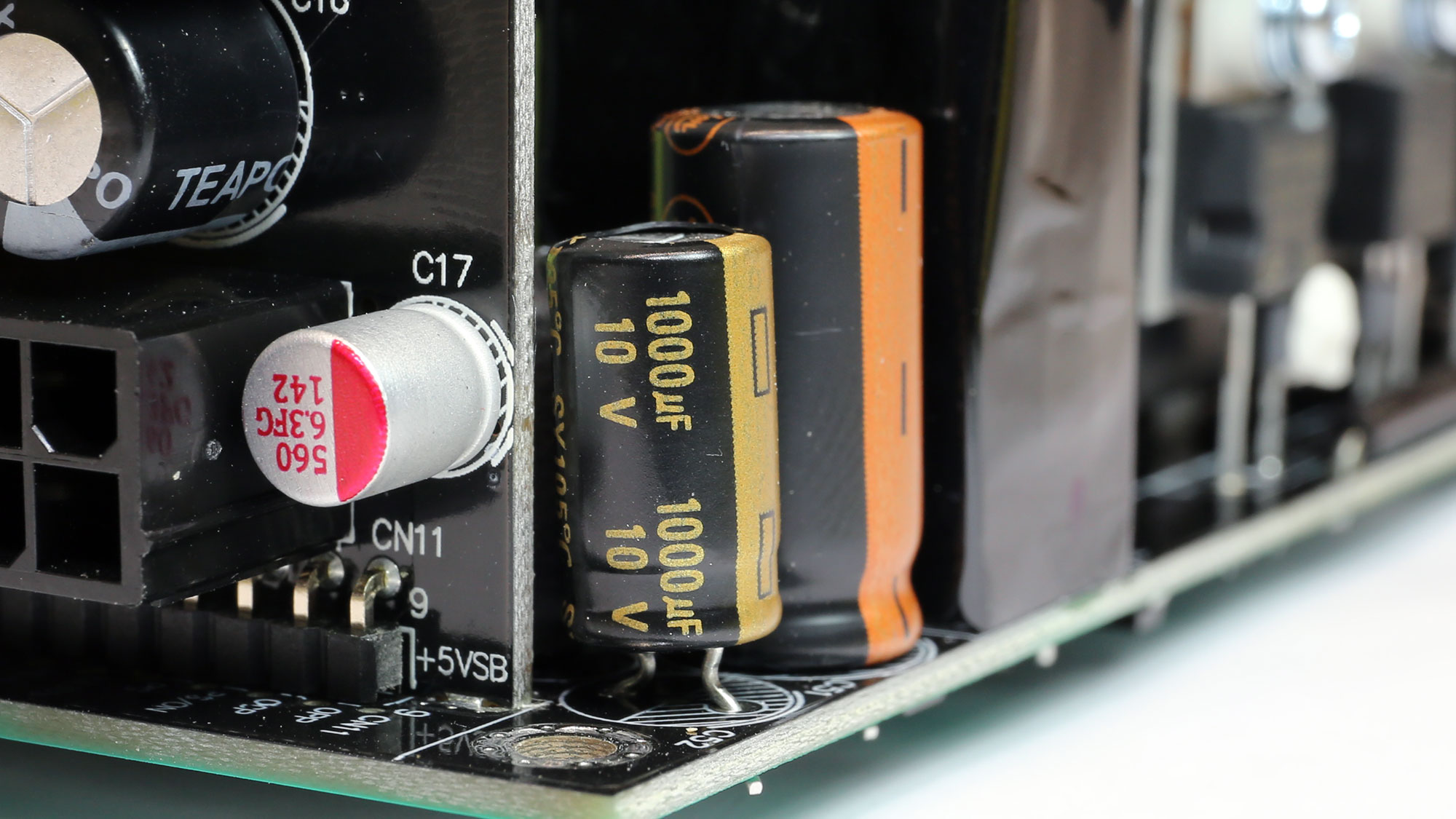

The filtering caps are of average quality. On paper, the specs of the majority of caps are good, but we are not so fond of Lelon caps.
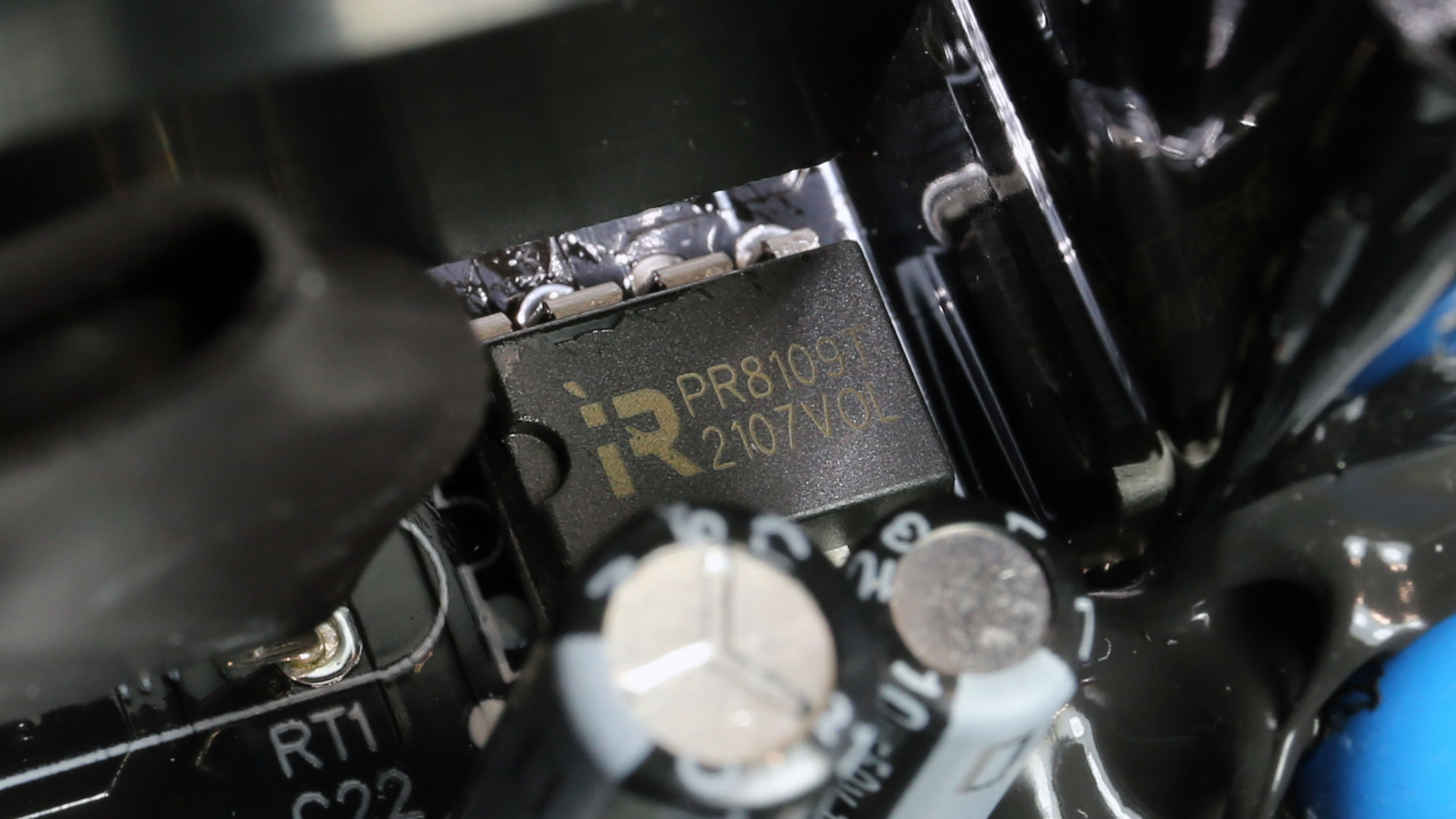

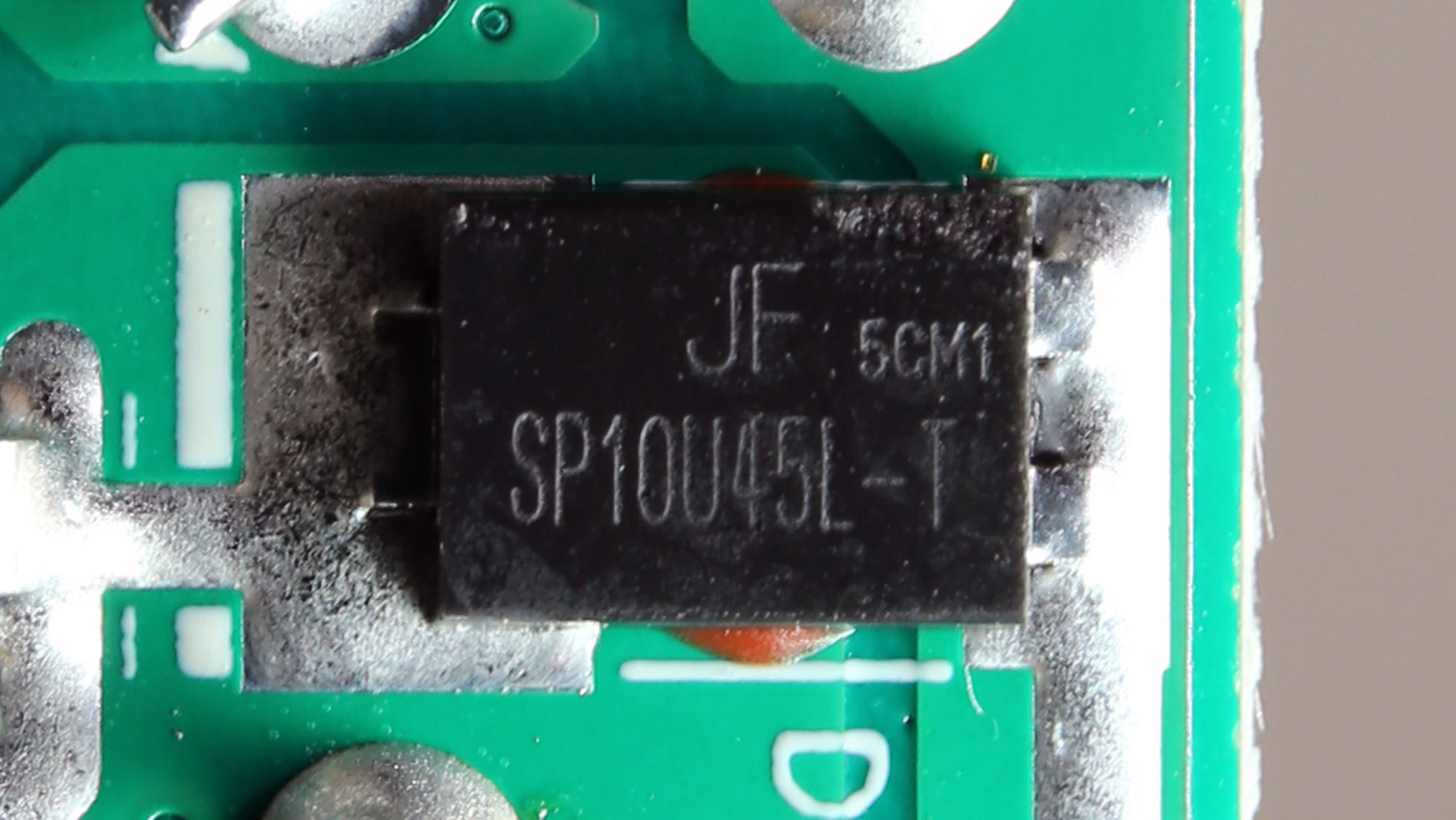
The standby PWM controller is a PR8109T IC. The rectifier on the secondary side is a SP10U45L SBR.
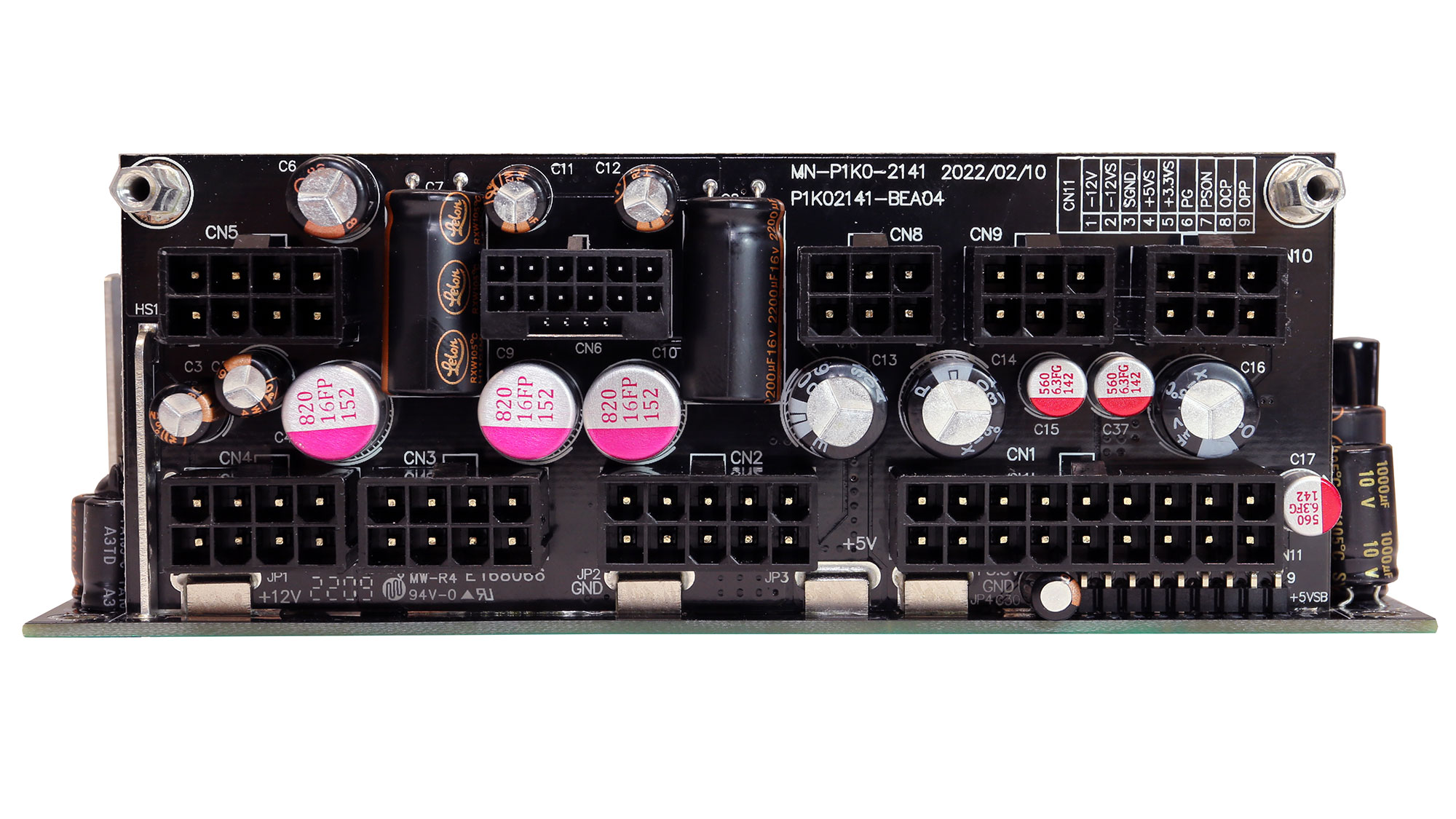
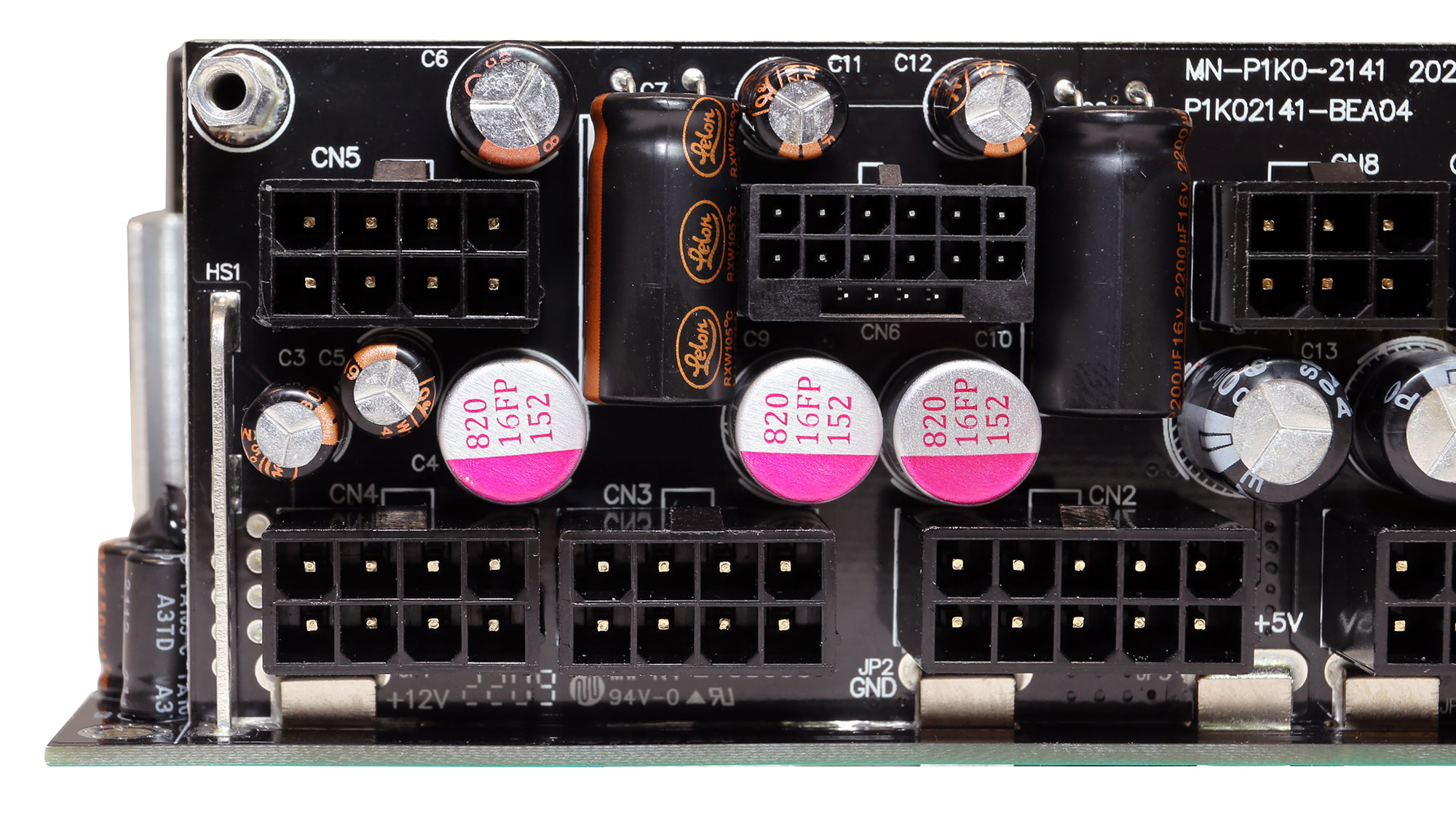

The modular has several polymer and electrolytic caps, forming a secondary ripple filtering layer.
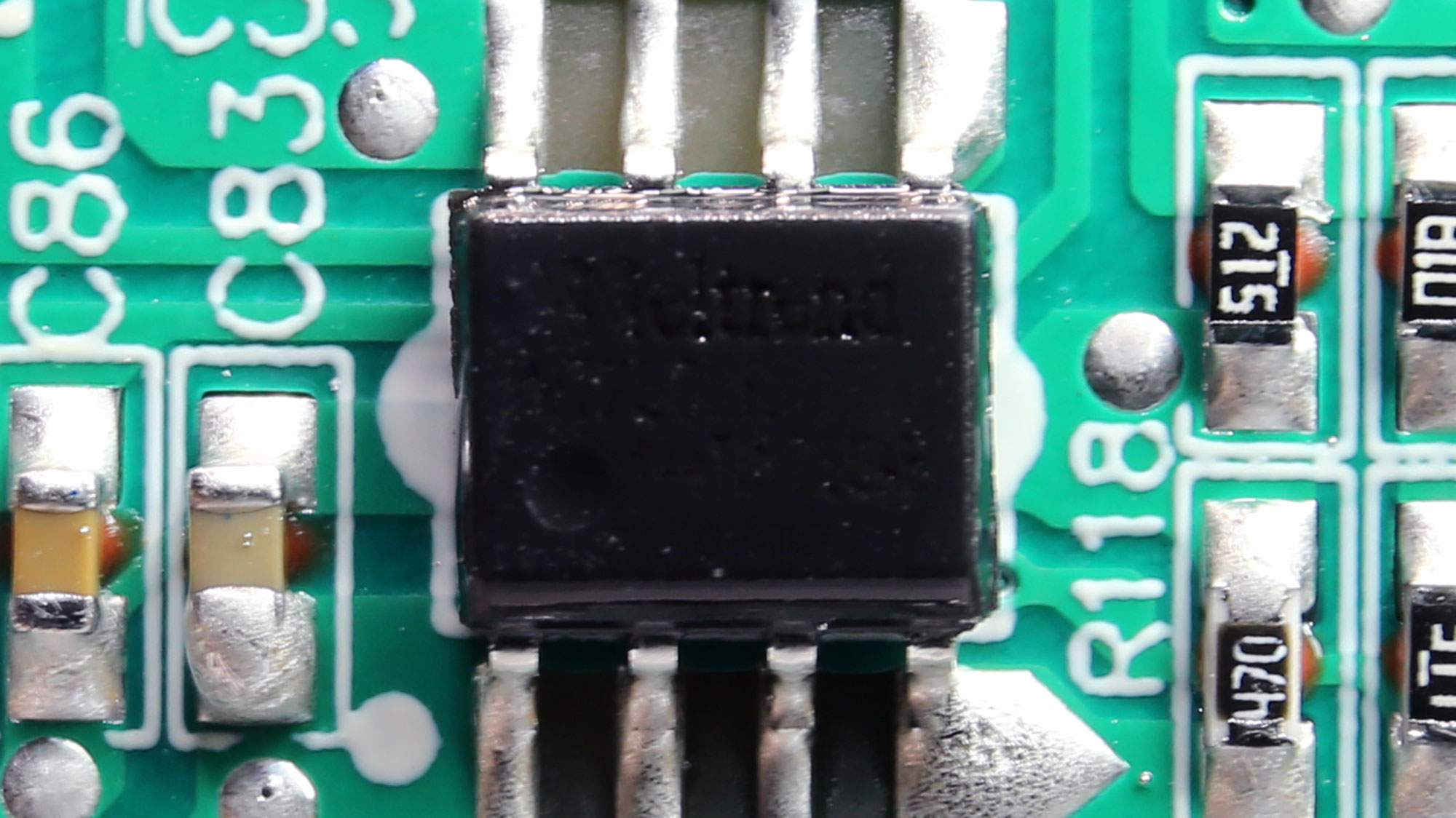
The main supervisor IC is a Weltrend WT7502R.
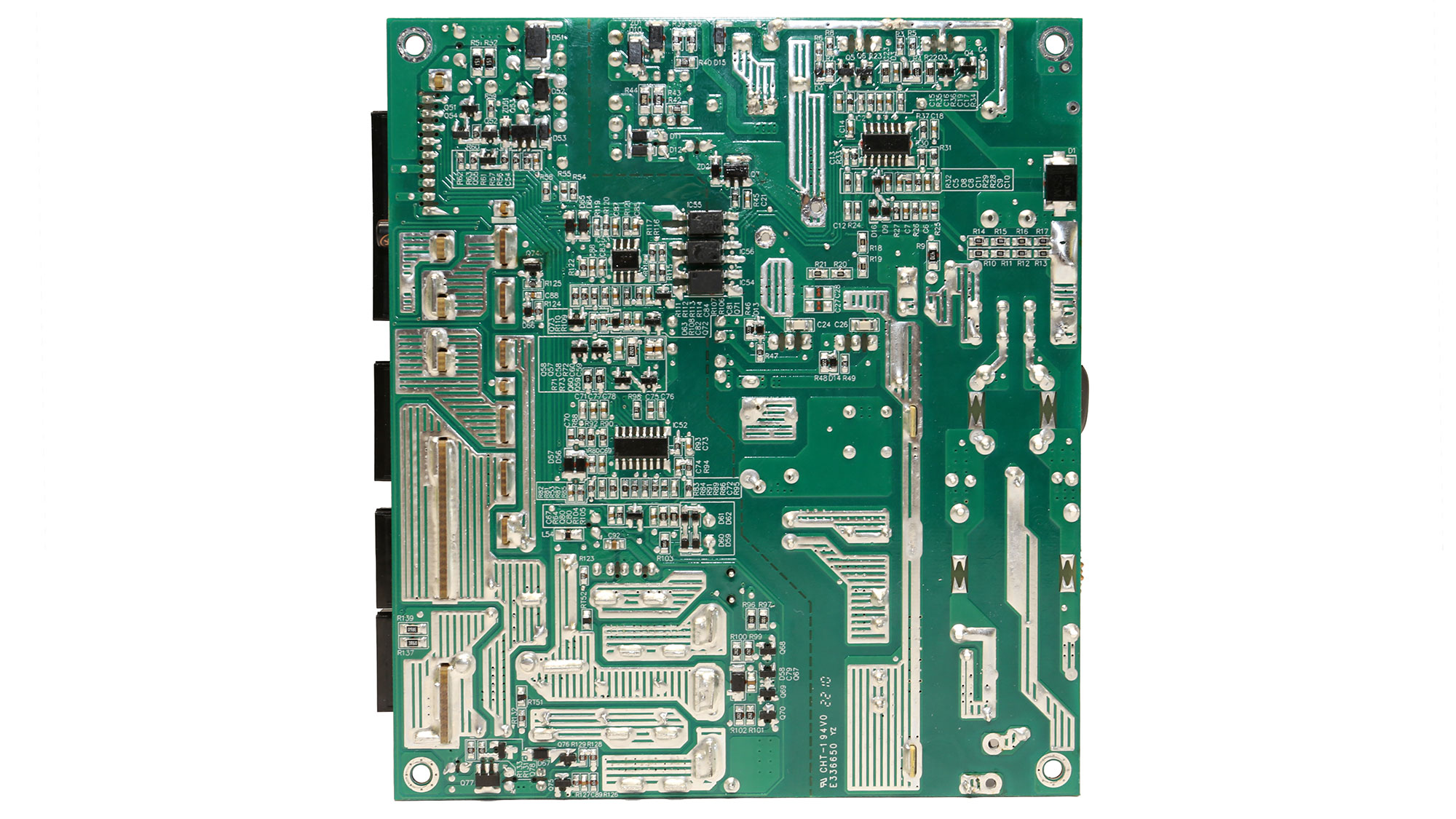
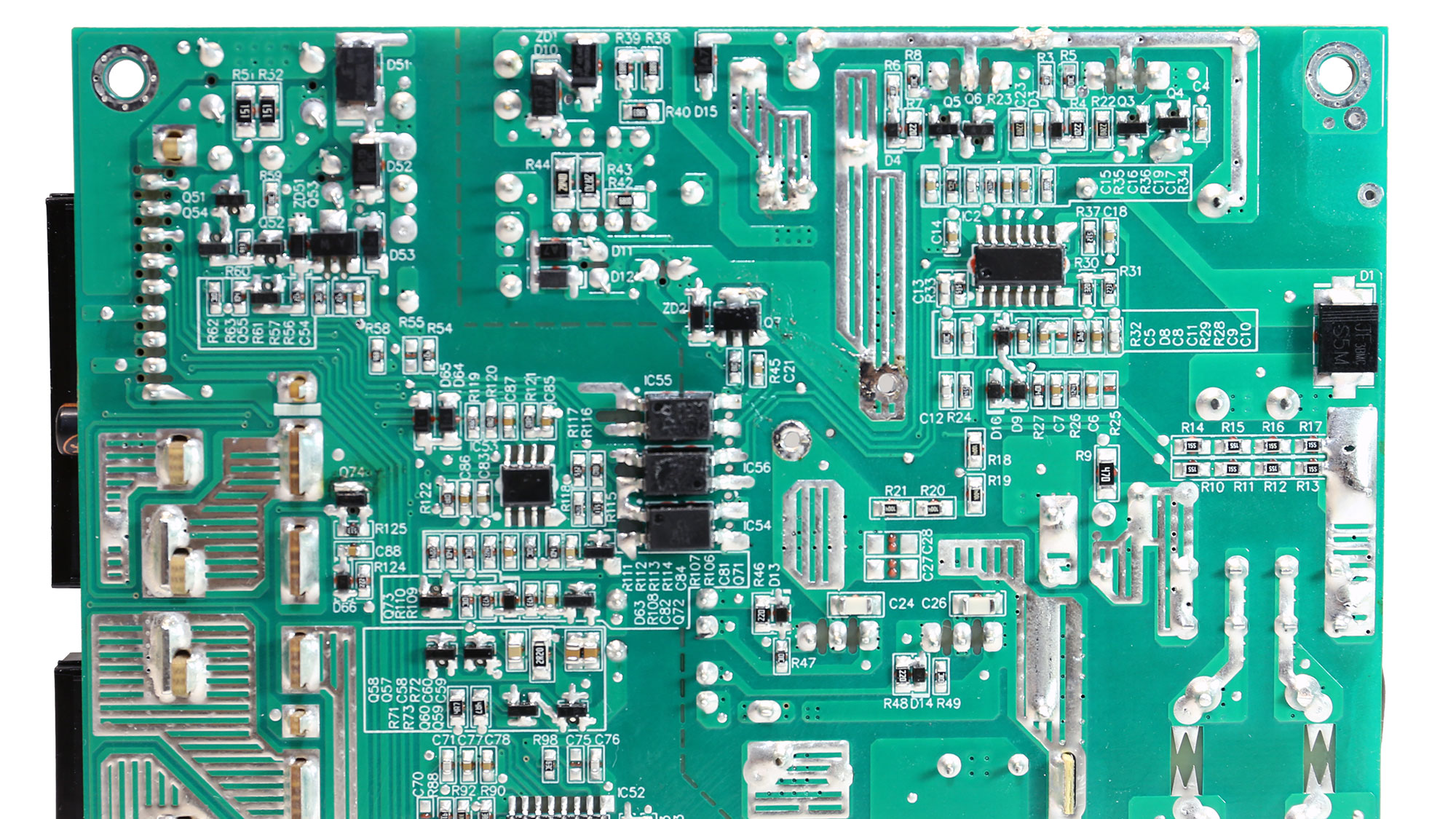
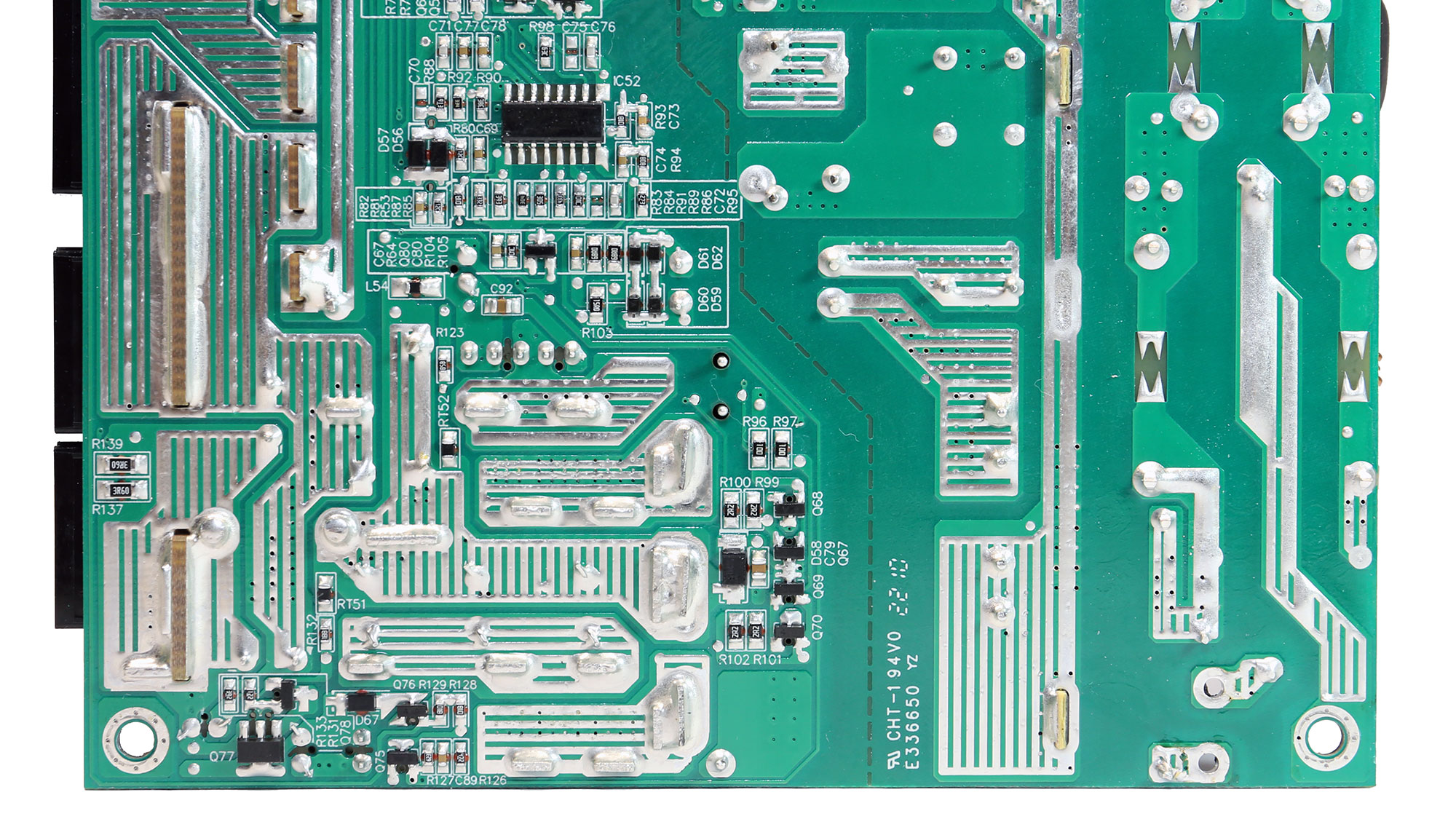
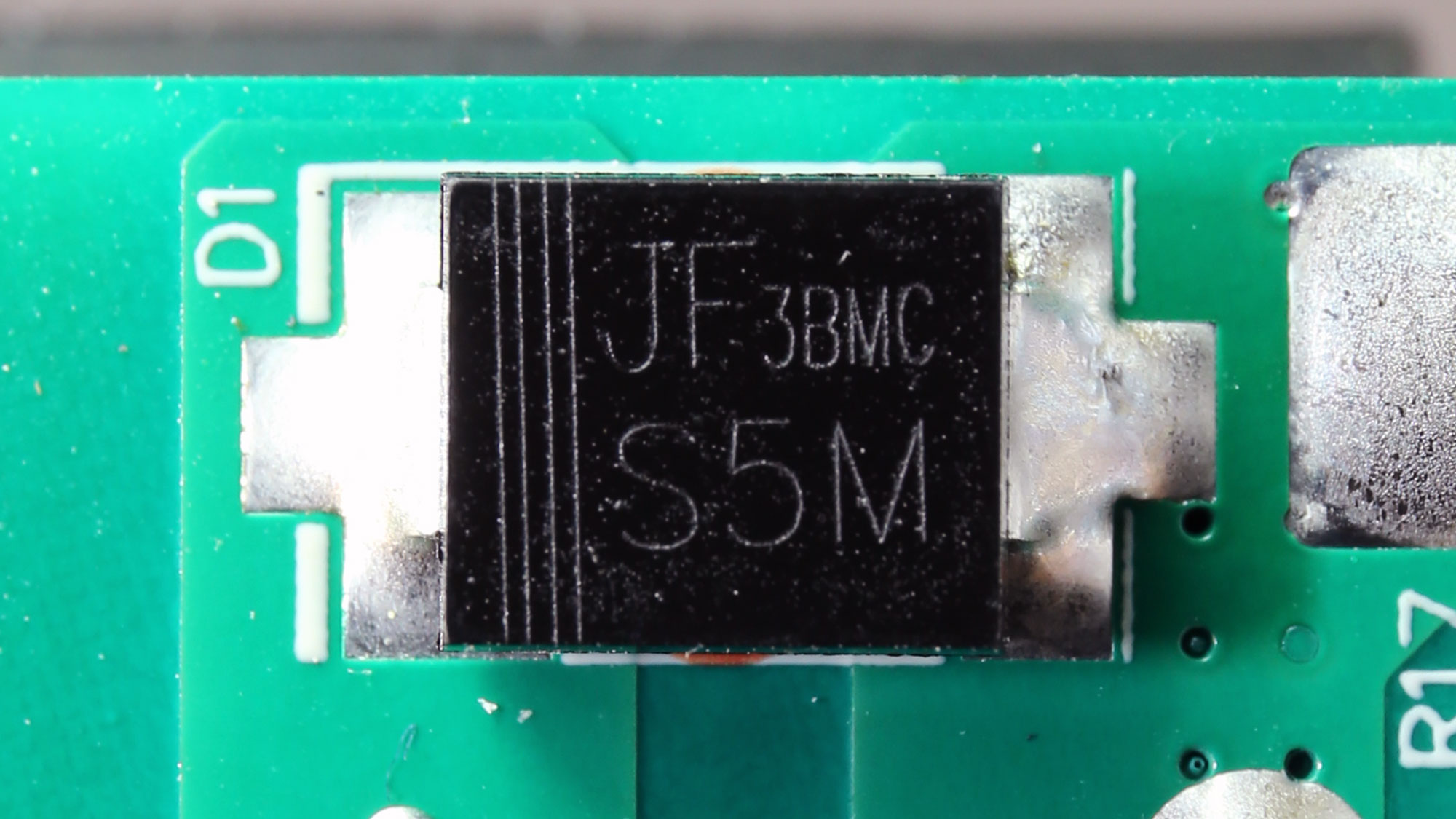
Soldering quality is really good.

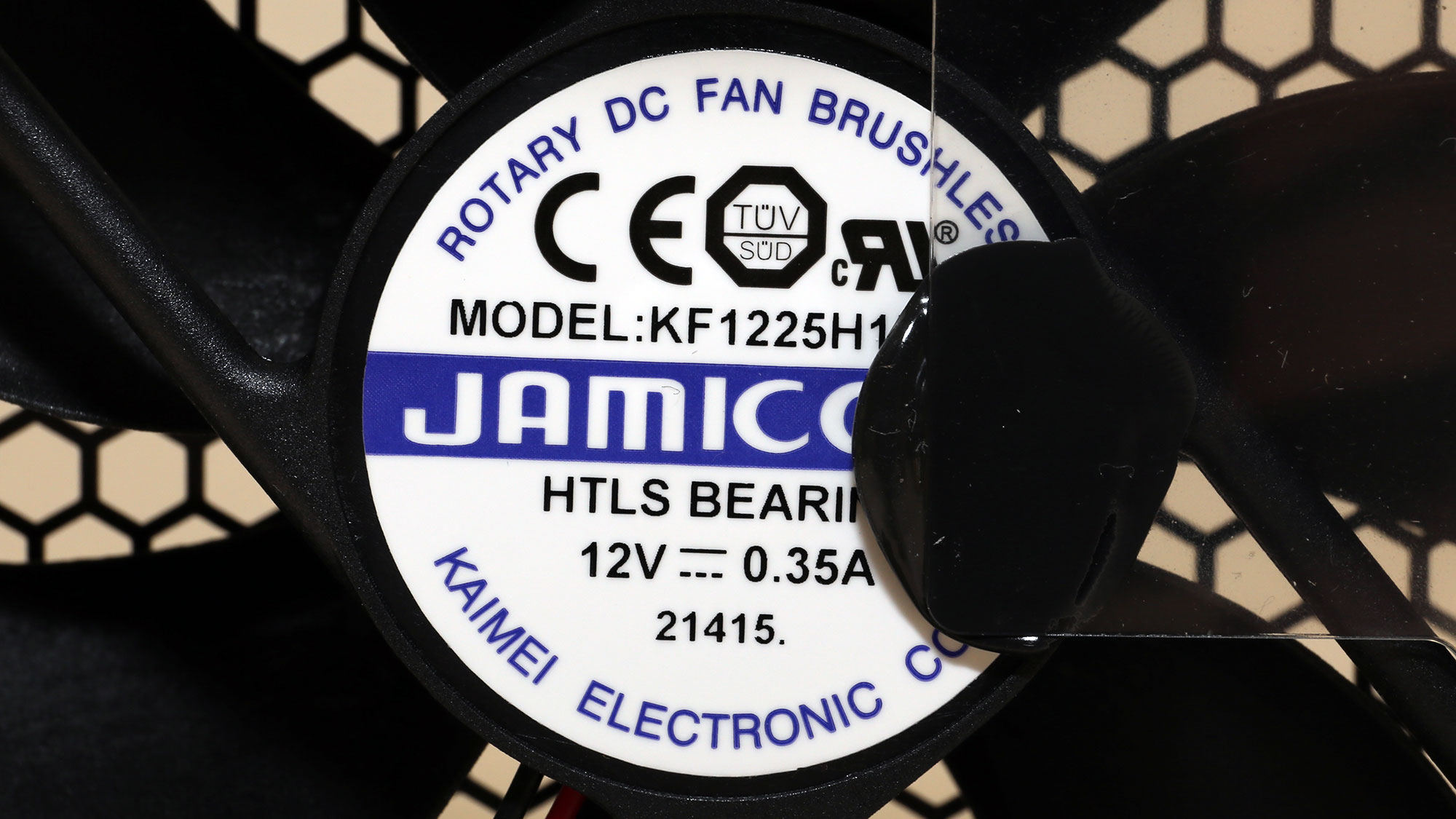
The cooling fan is by Jamicon, and it measures 120mm across. It uses a rifle bearing for increased reliability and lower noise output.
MORE: Best Power Supplies
MORE: How We Test Power Supplies
MORE: All Power Supply Content
Current page: Specifications and Part Analysis
Next Page Load Regulation, Hold-Up Time, Inrush & Leakage Current, Efficiency and Noise
Aris Mpitziopoulos is a contributing editor at Tom's Hardware, covering PSUs.
-
Udyr So this is a 4 star product with 1, 2, 3, 4... 12 cons?Reply
The cons are somewhat consistent with the review on TPU, but over there it was not a recommended product.
Maybe there's something more my ignorant self is not seeing here. -
DRagor ReplyUdyr said:So this is a 4 star product with 1, 2, 3, 4... 12 cons?The Gigabyte UD1000GM PG5 is the first PSU available with a 12+4 pin PCIe connector, so practically, it doesn't have any competitors yet.
How it was? In the land of blind one eyed is a king? -
WrongRookie No thanks. I'd rather wait for Seasonic do one than get another one that could end up explodingReply -
Udyr Reply
I understand the reference, but in this case, a unit with these many downsides doesn't justify a recommendation, unless there's something else besides being the only one available (for now).DRagor said:How it was? In the land of blind one eyed is a king? -
thisisaname Reply
Some of the positives are not that great either.Udyr said:So this is a 4 star product with 1, 2, 3, 4... 12 cons?
The cons are somewhat consistent with the review on TPU, but over there it was not a recommended product.
Maybe there's something more my ignorant self is not seeing here.
+Full power at 47 degrees Celsius
+Most protection features are properly set -
watzupken Once beaten, twice shy. After the shady practice and persistent denial of critical flaws with their product by Gigabyte, even if this is a 5 stars PSU, I will not bother to consider it. There are much better options out there. I rather pay more than to deal with shady companies. In my opinion, it is not the product that we need to be mindful because every company will at some point produce bad product. It is how they take steps to resolve the issue and maintain that goodwill. Gigabyte basically burned that goodwill in the PSU fiasco. So no more Gigabyte products for me since the company can’t be bothered.Reply
